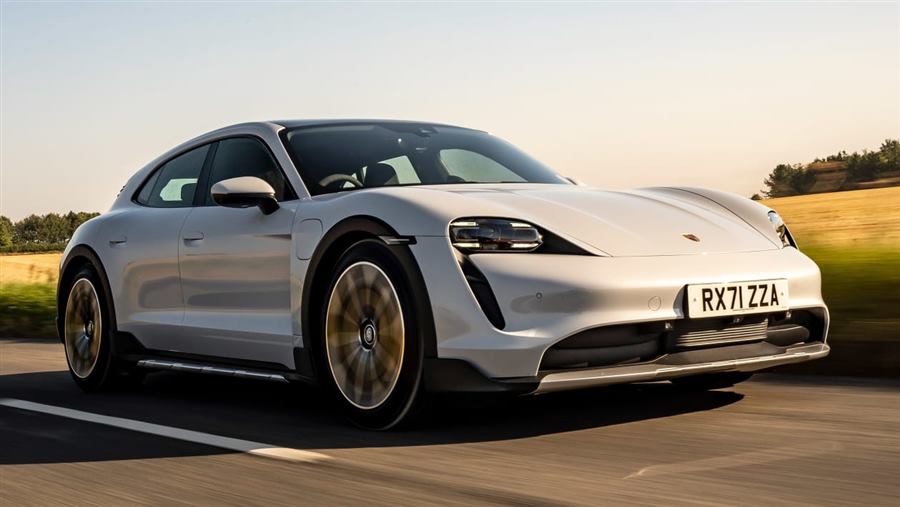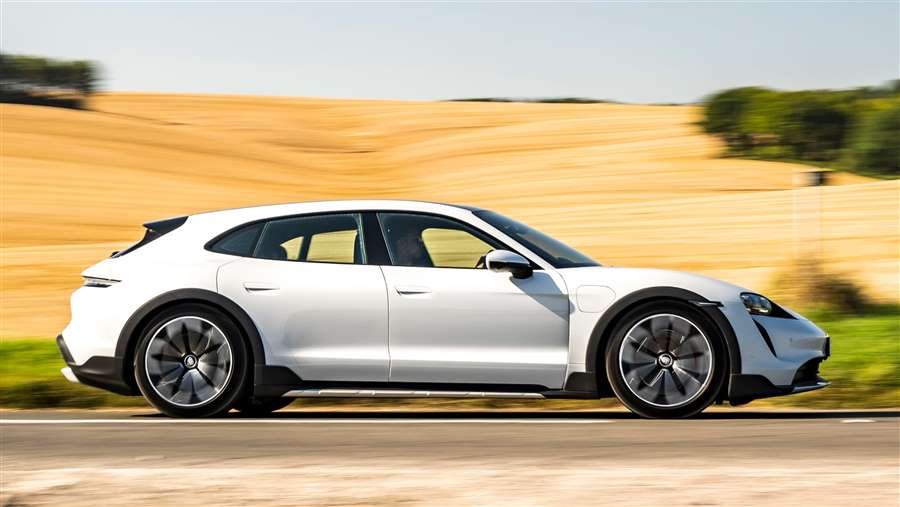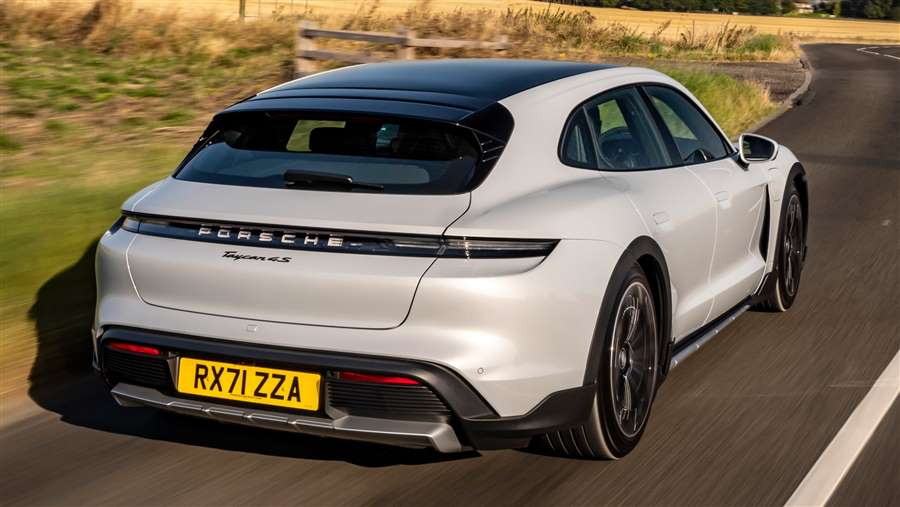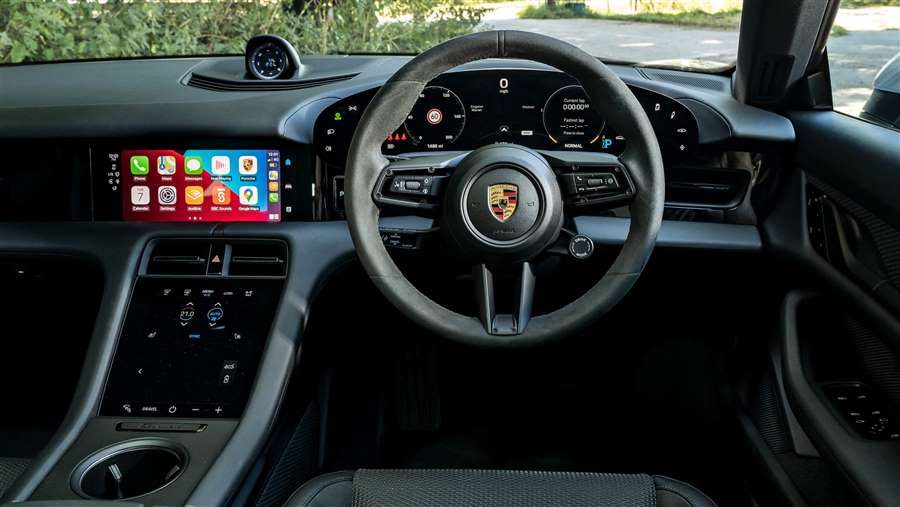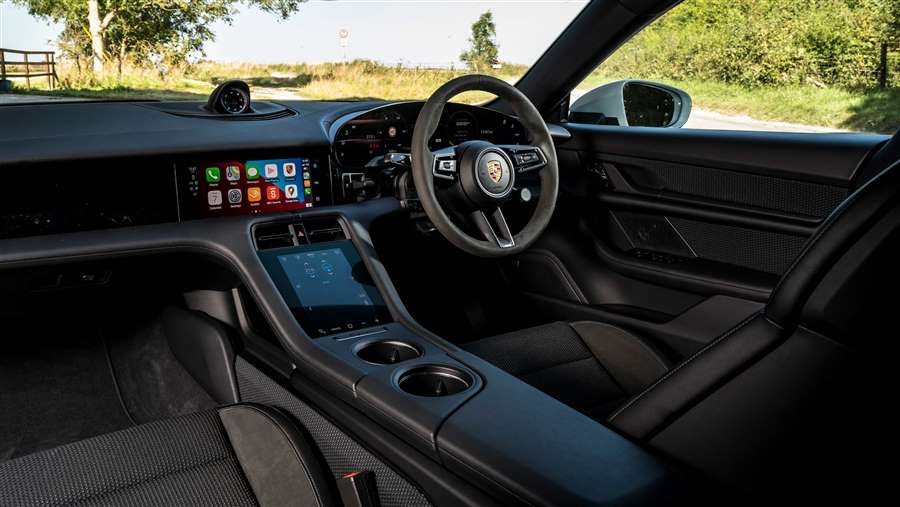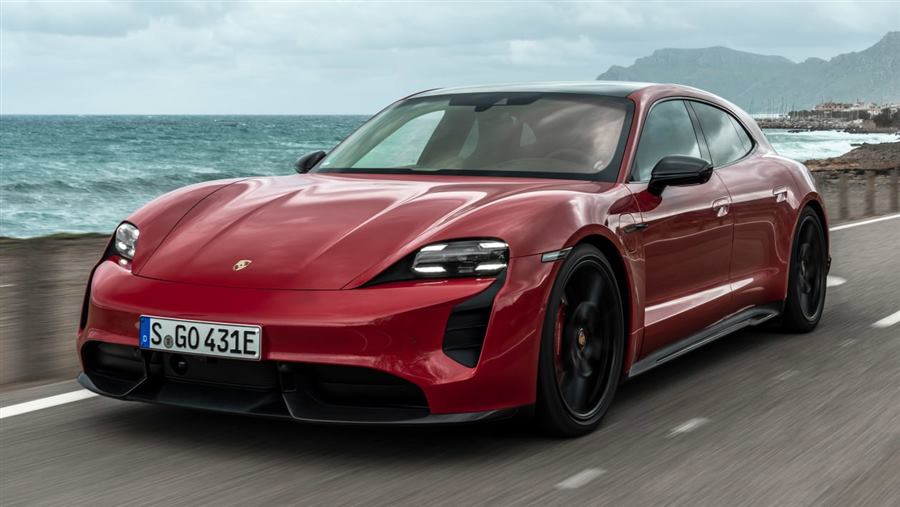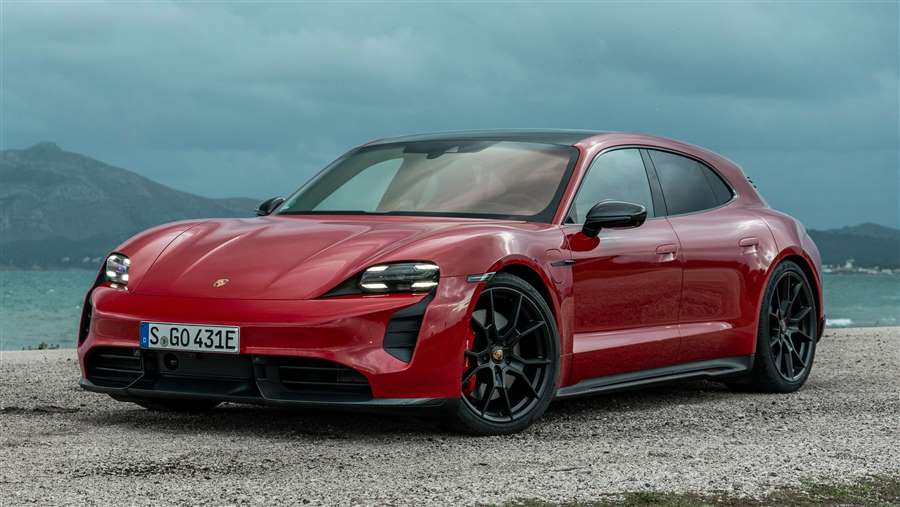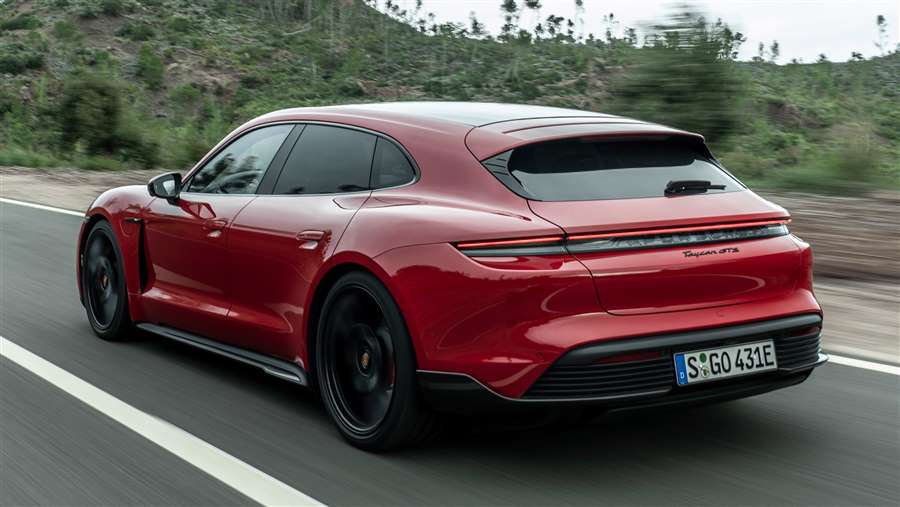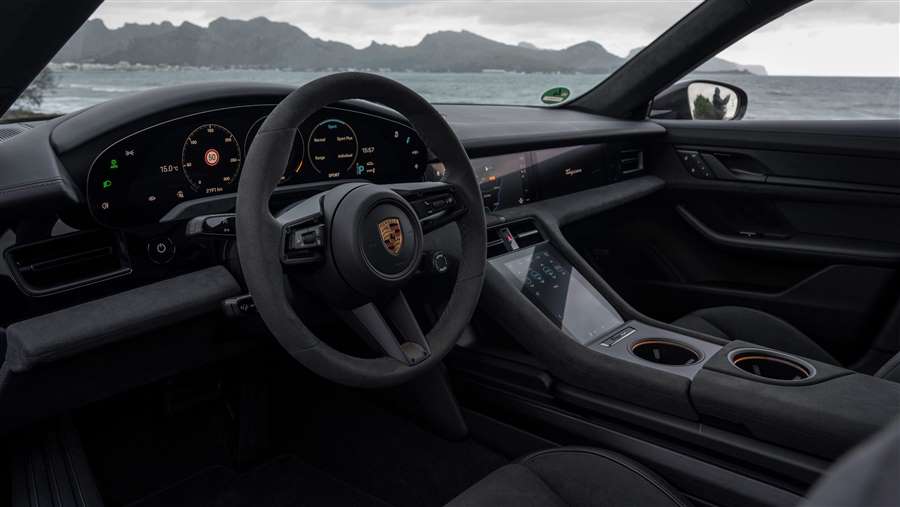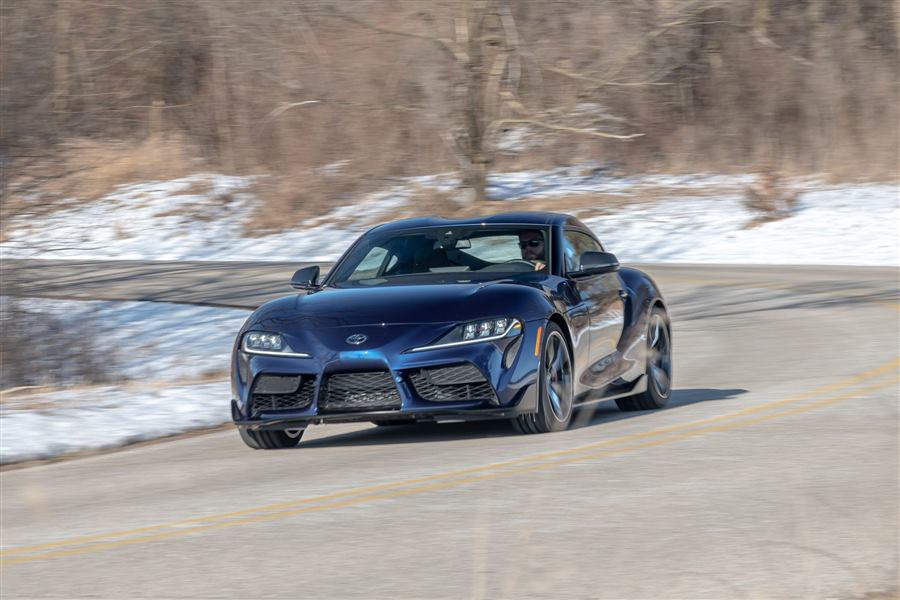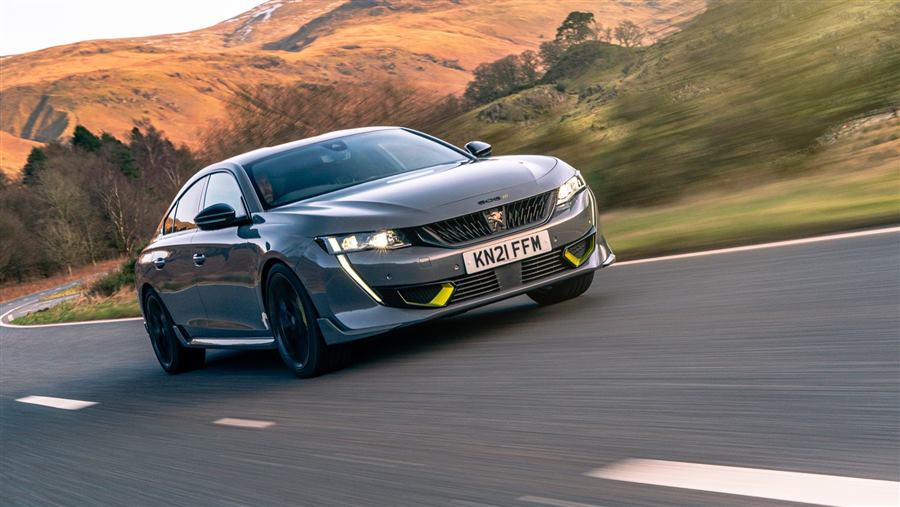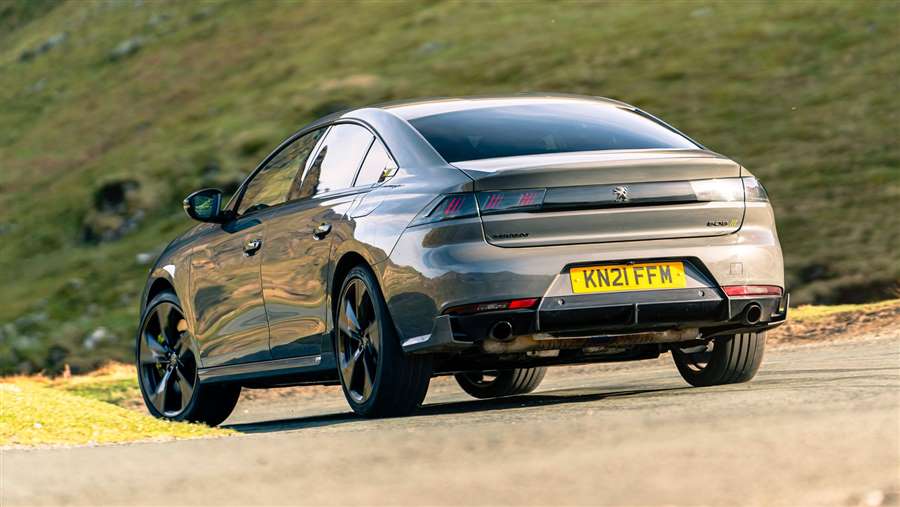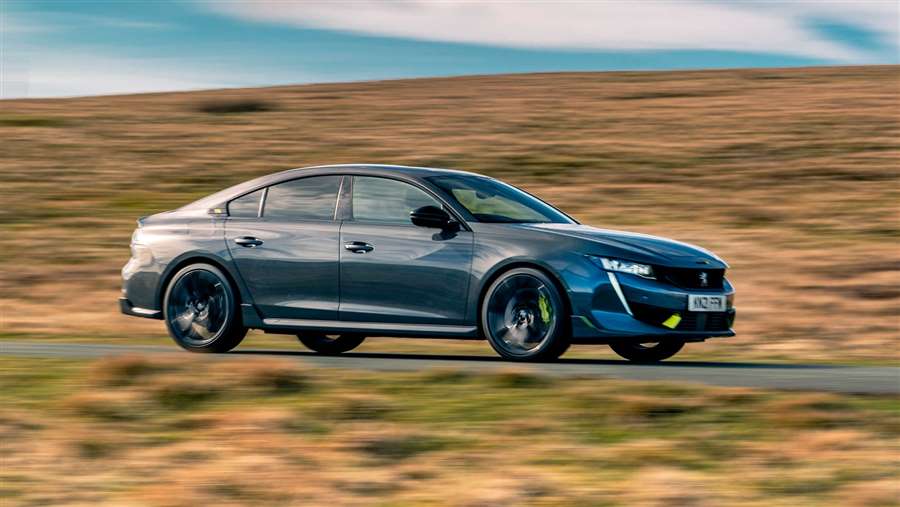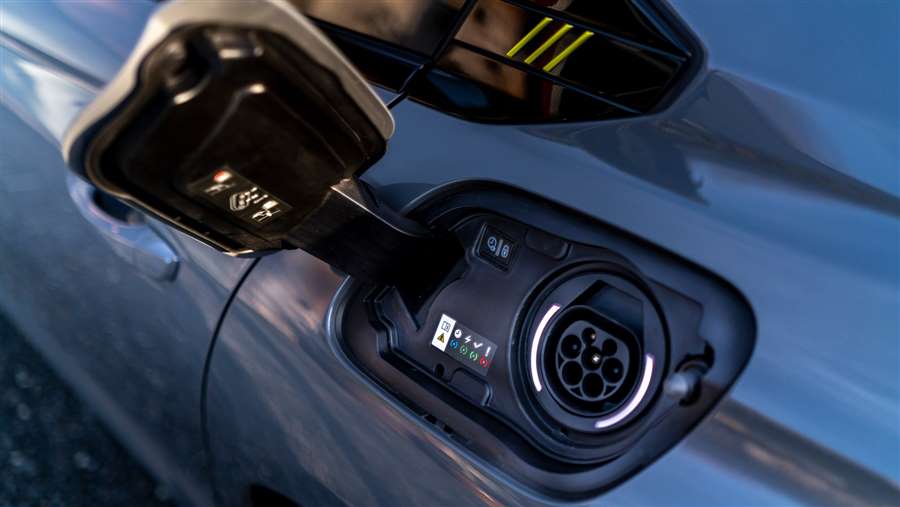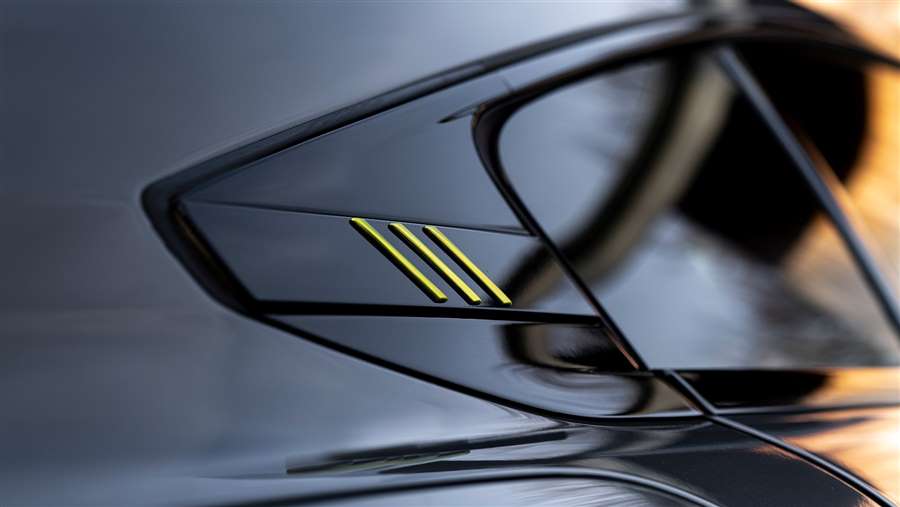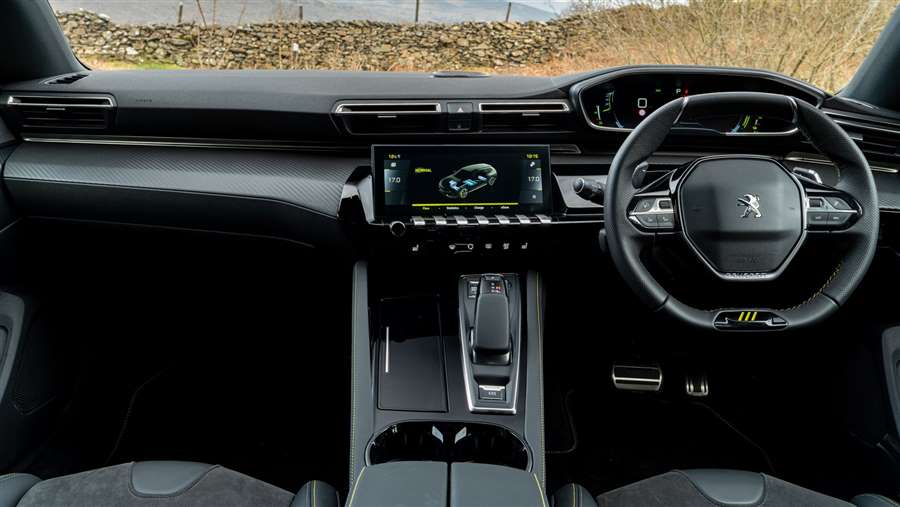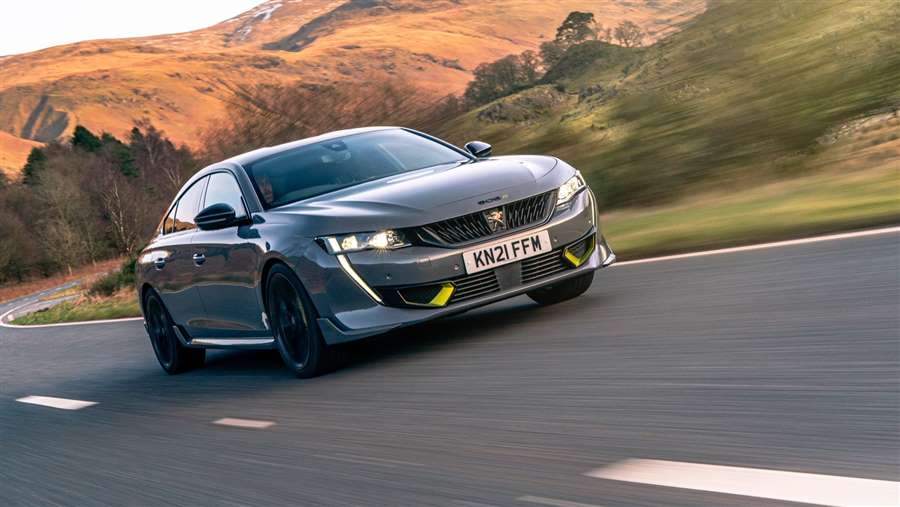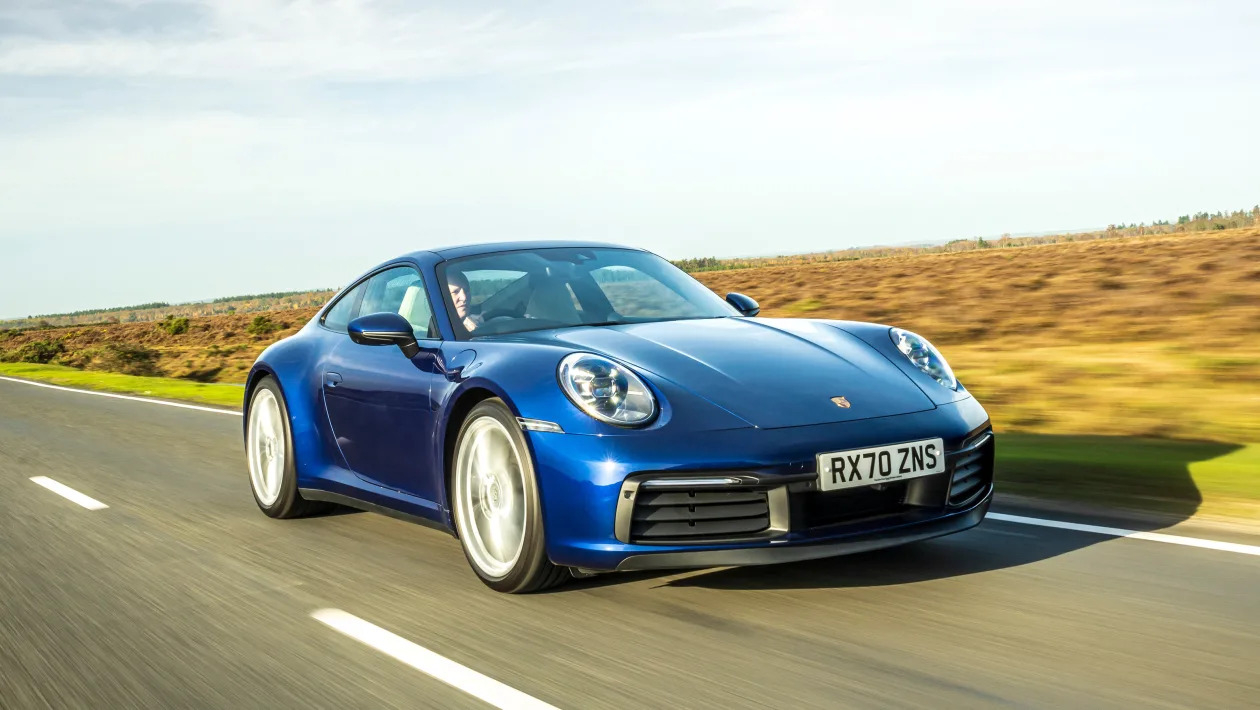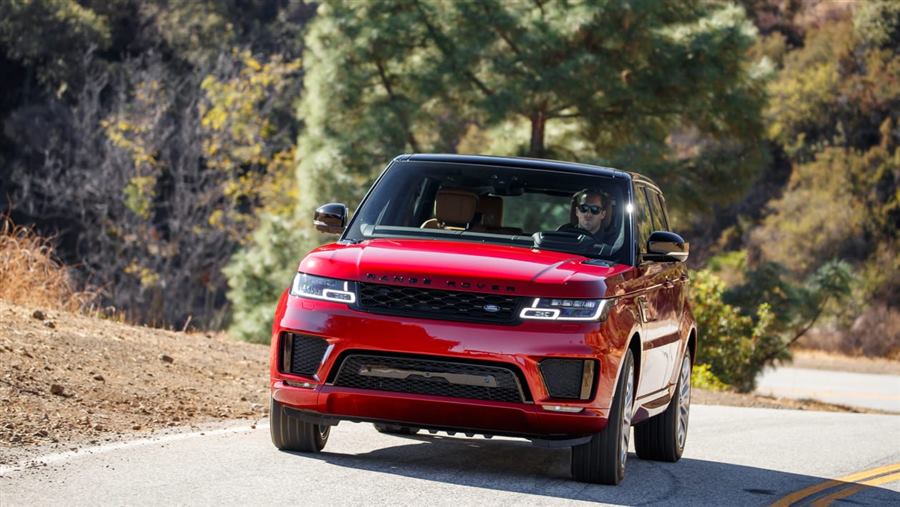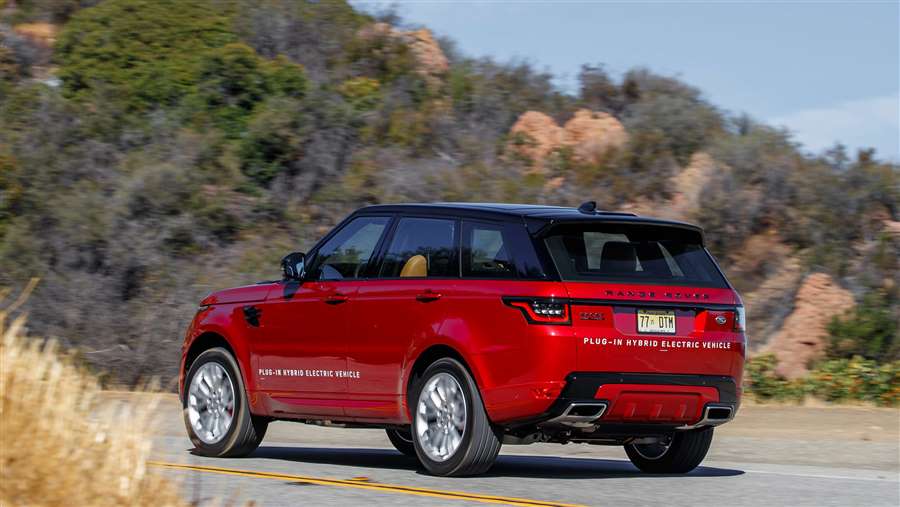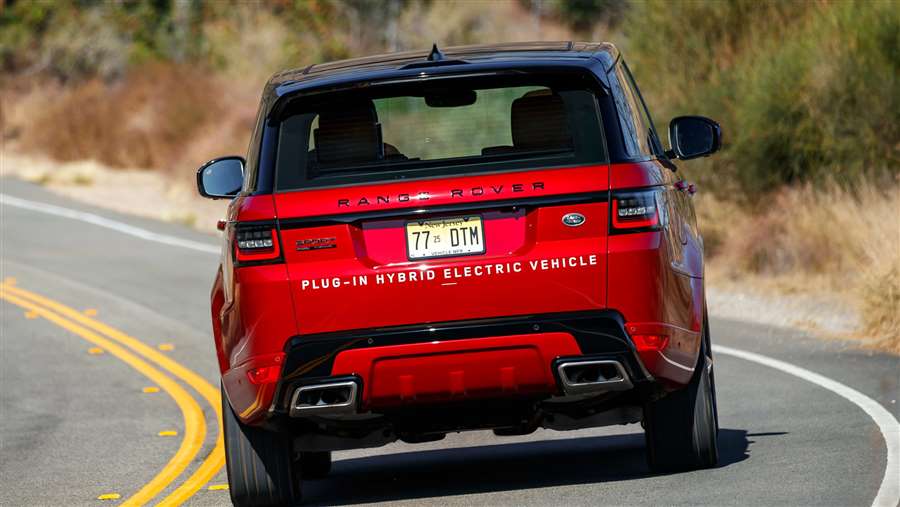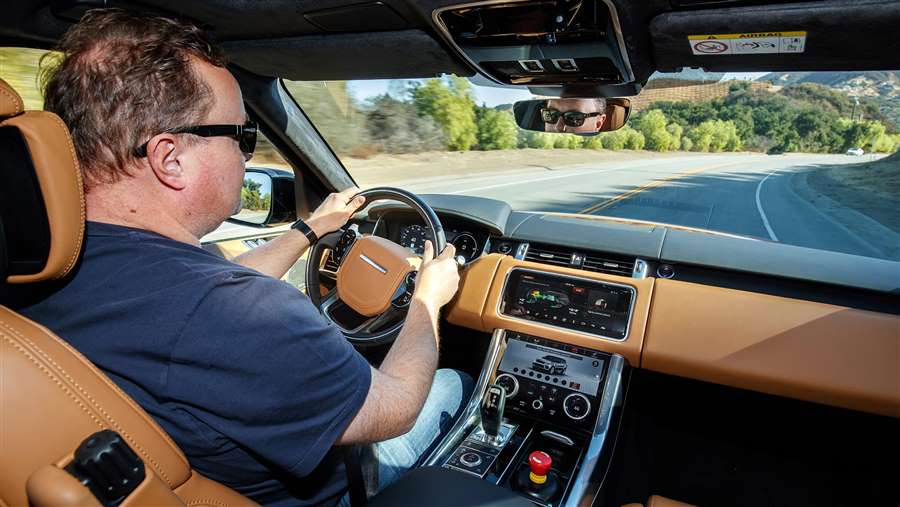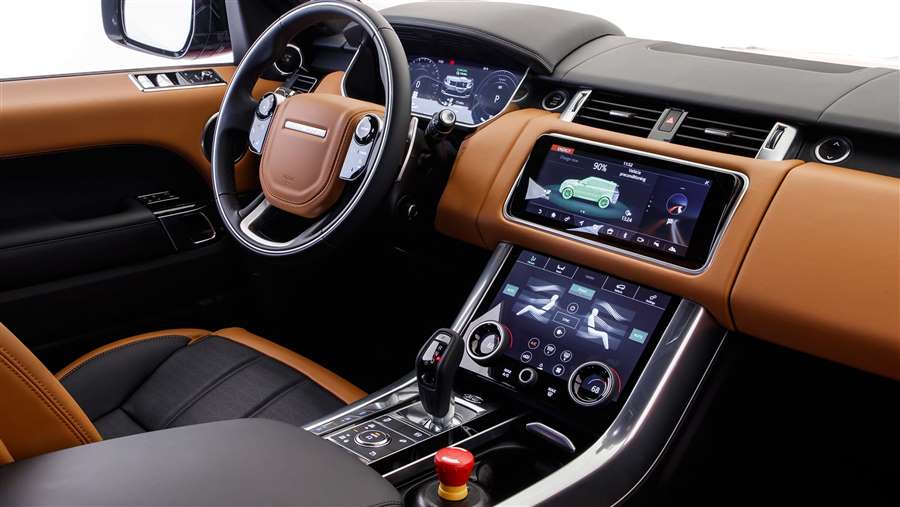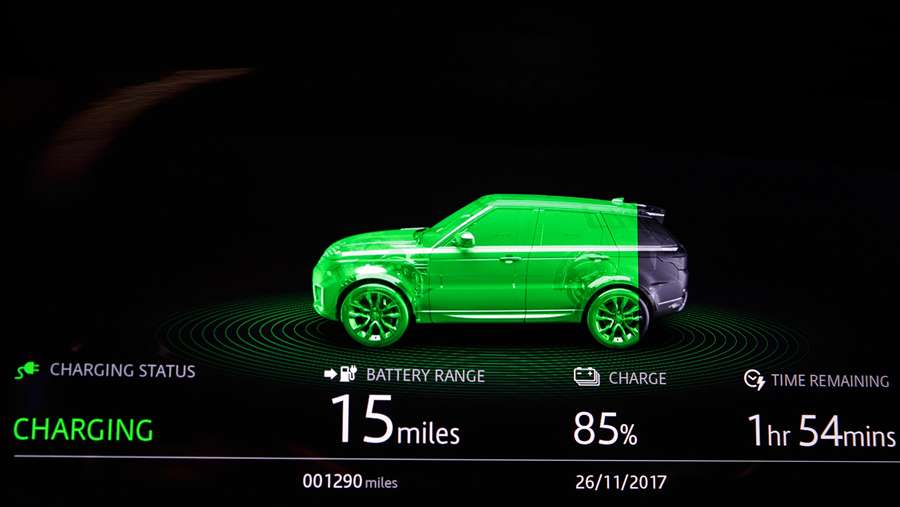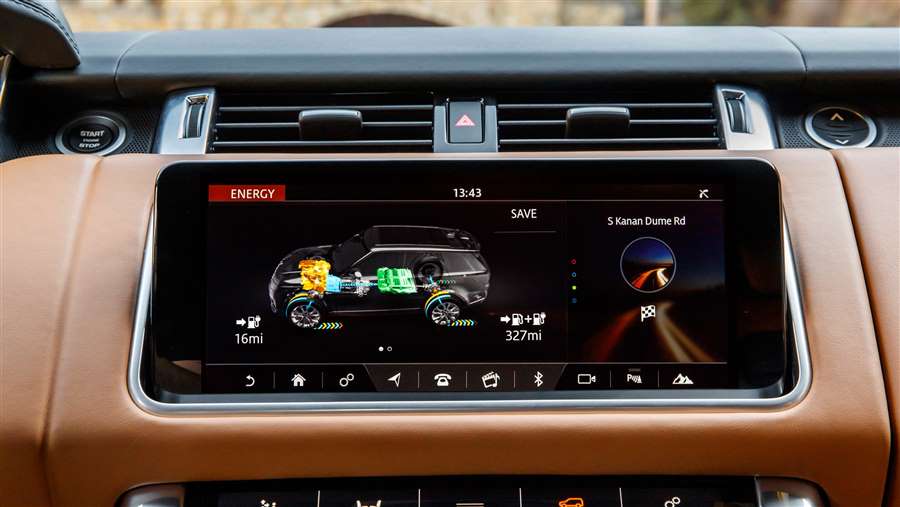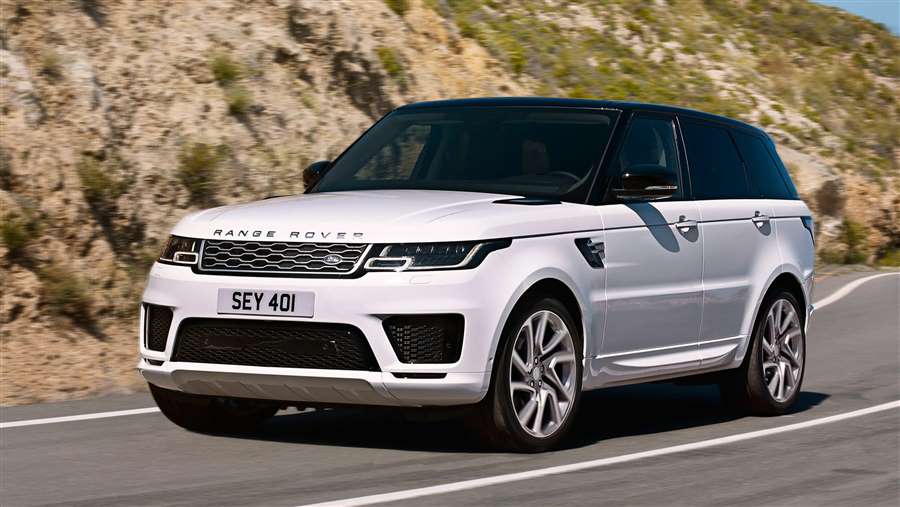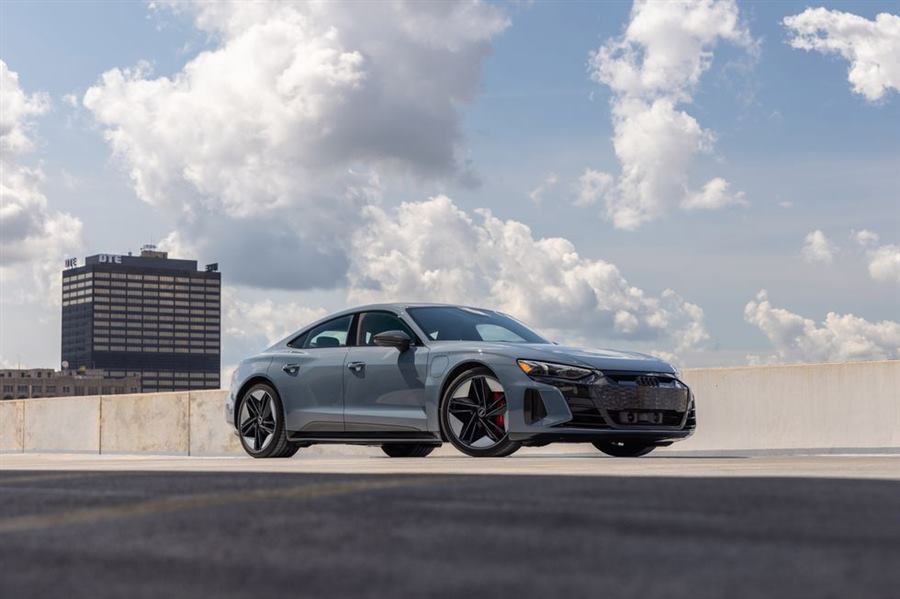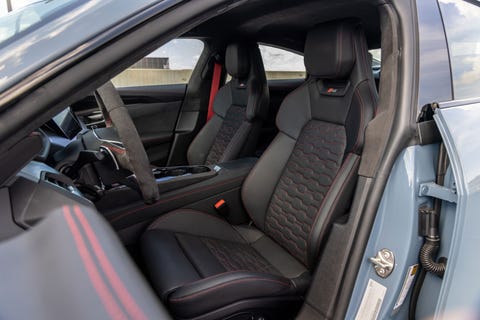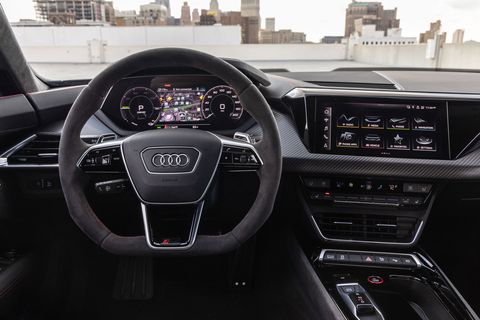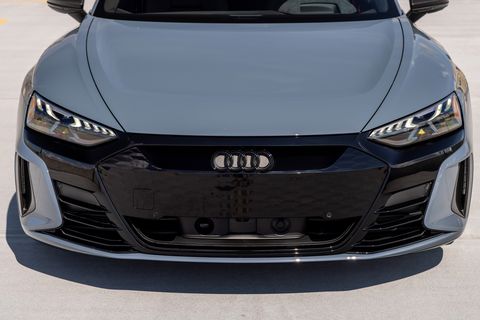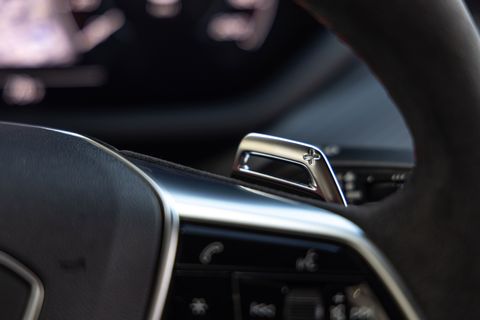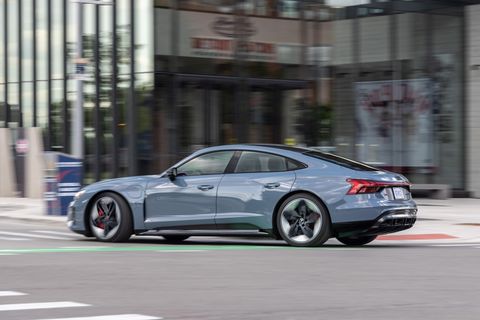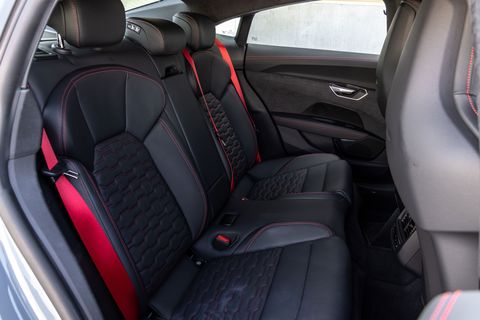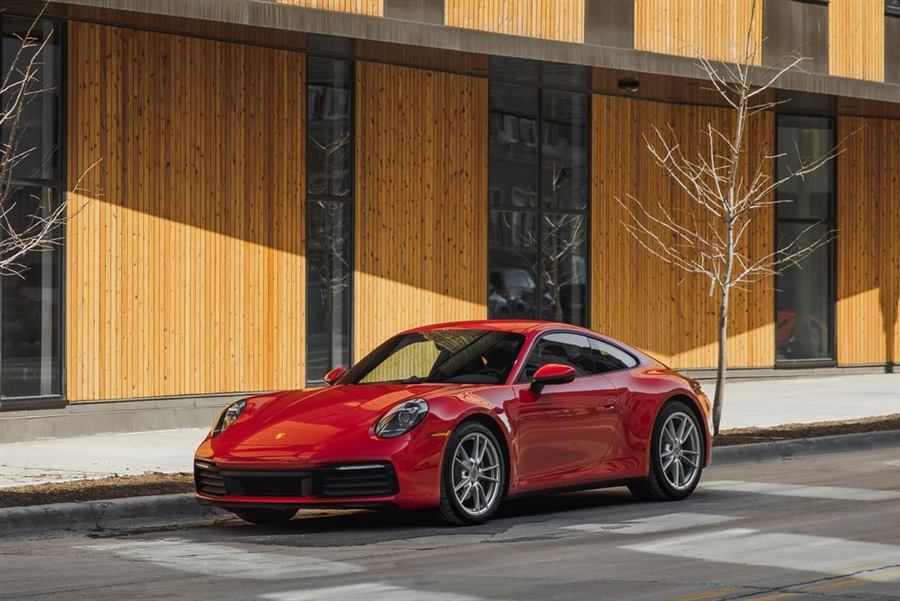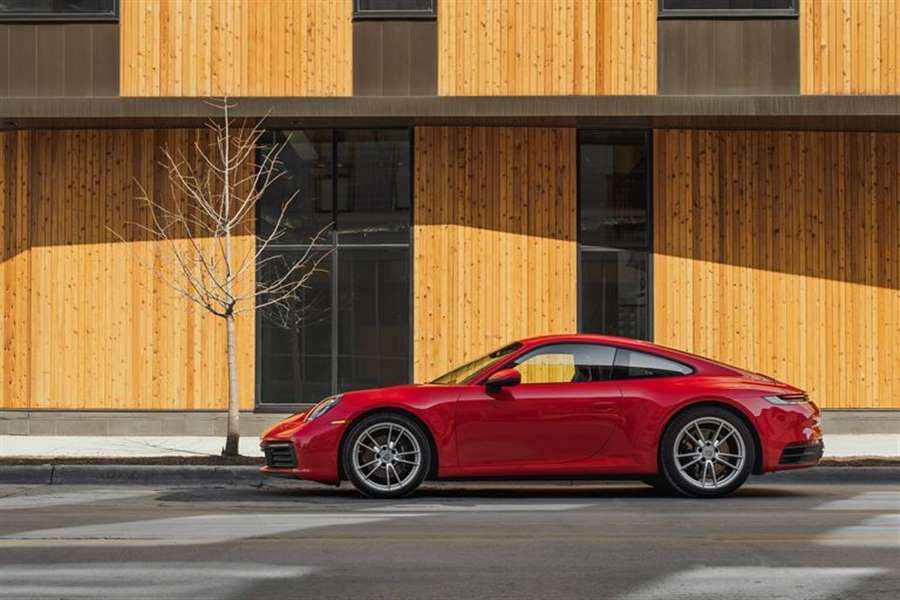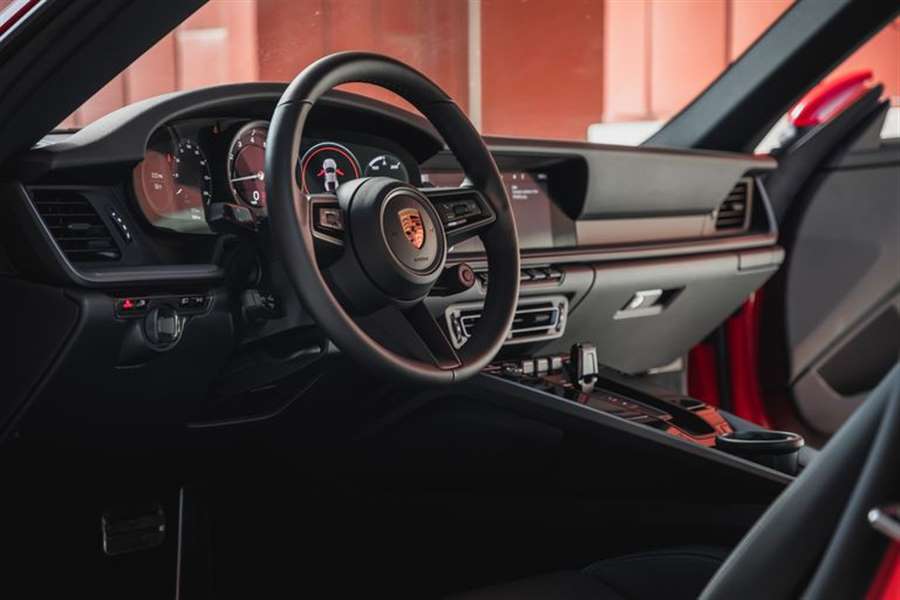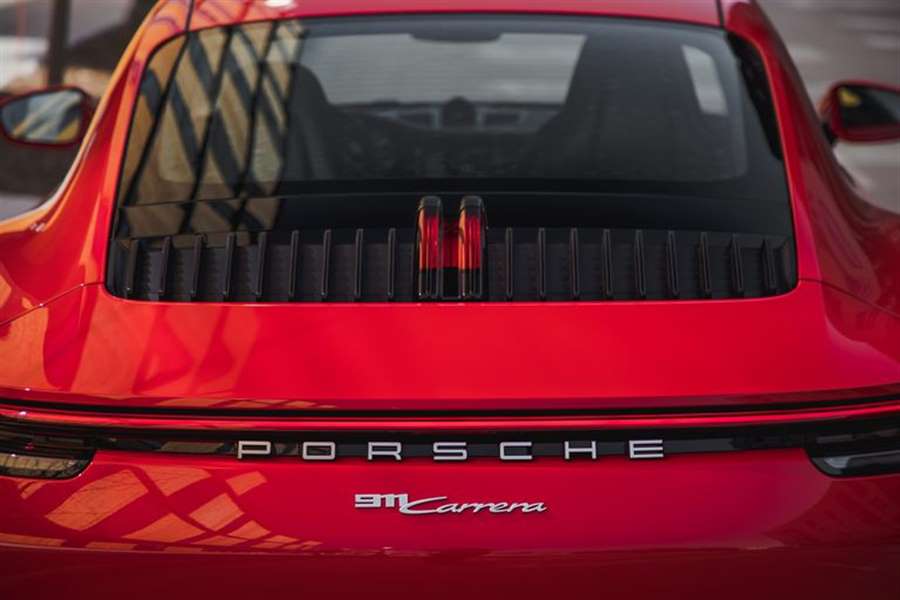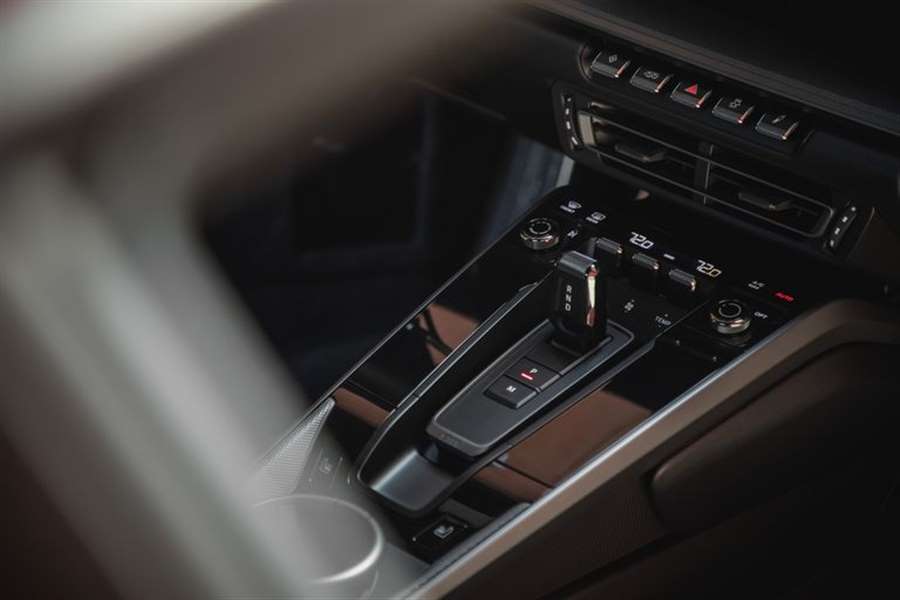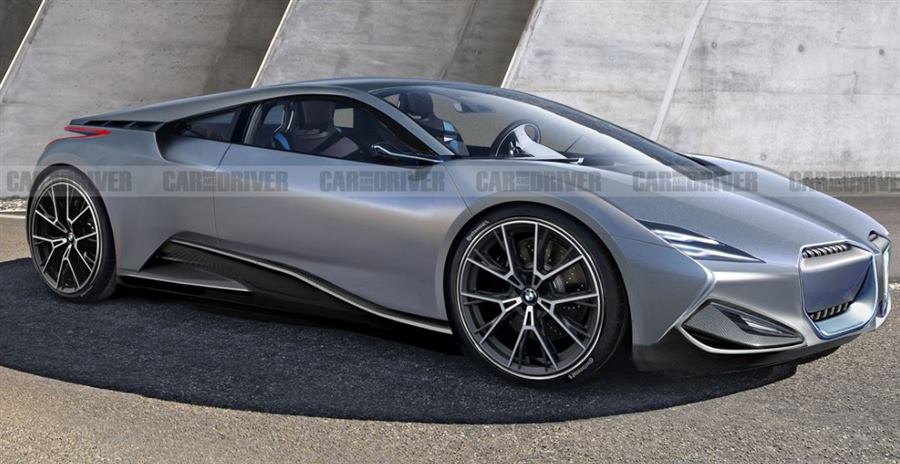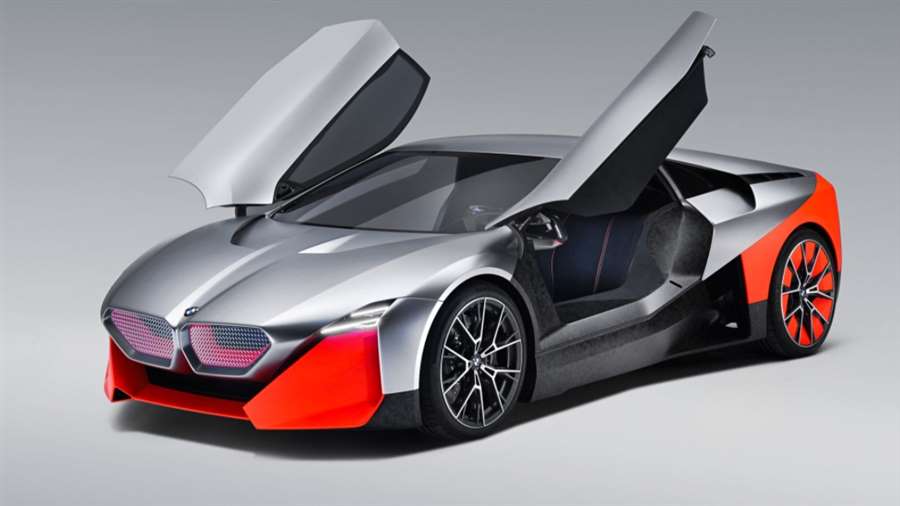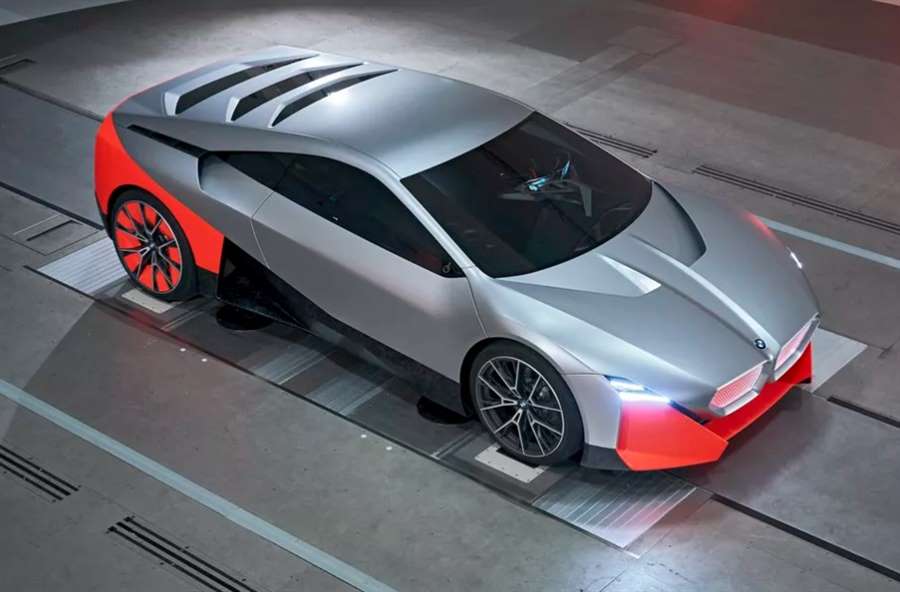"The latest 992-generation Porsche 911 is the best yet; fast, fun and hugely capable"
The Porsche 911 is the flagship model in the German manufacturer’s range and is perhaps the most well-known sports car on sale today. The current model, referred to by enthusiasts as the ‘992’, is the latest evolution of a car whose recipe has remained largely unchanged for over 50 years – its rear-mounted six-cylinder engine, great performance and genuine everyday usability are as important now as they were in the 1960s.
Today’s model represents a meaningful step forward from the 991-generation, which was first introduced in 2011. Based on new modular underpinnings that will allow for electrification, the latest car also gets a refreshed engine, a new interior packed with technology and styling that’s modern yet still faithful to the model’s impressive heritage.
The Porsche 911 coupe is available in eight main trim levels; Carrera, Carrera 4, Carrera T, Carrera S, Carrera 4S, GTS and flagship Turbo and Turbo S. There's also the GT3 and the GT3 RS, which are hardcore versions designed for weekend and track-use, as well as the Porsche Exclusive Manufaktur special-edition models. These include the limited Sport Classic, which borrows many bits from the Turbo but comes with a seven-speed manual gearbox and rear-wheel-drive setup, along with a unique, retro-inspired design.
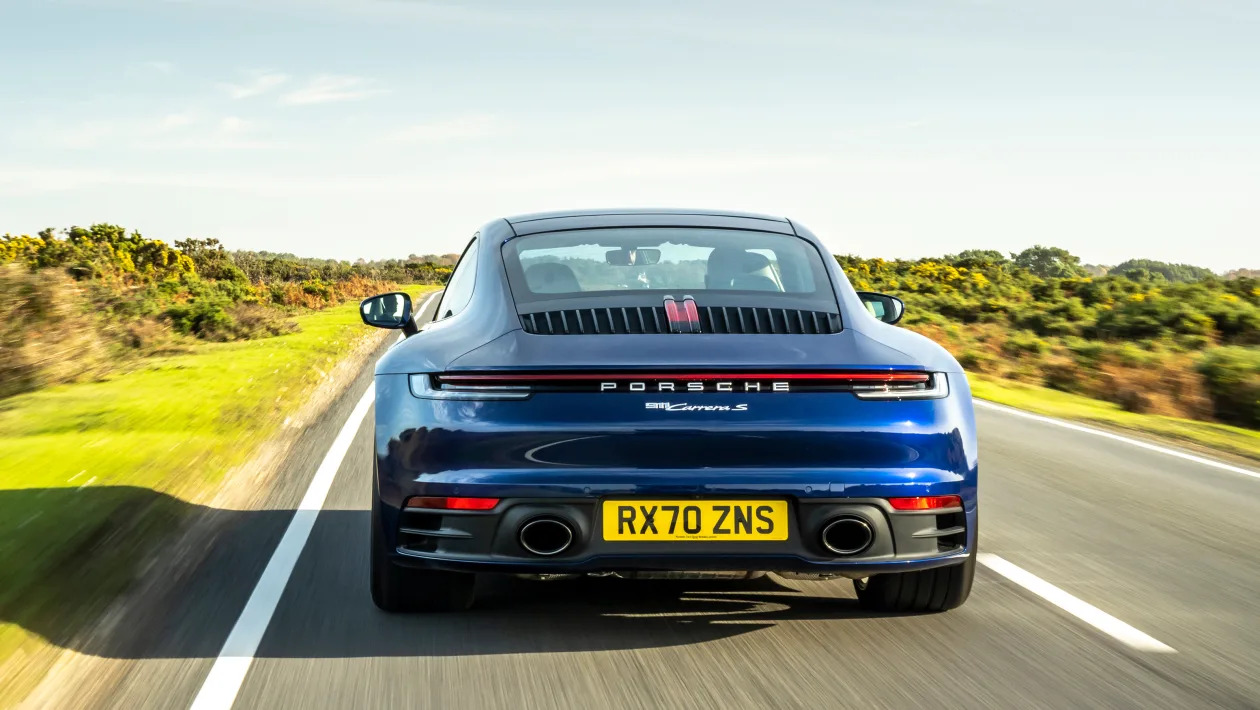
The 911 Carrera coupe is the starting point of the range, using a 380bhp 3.0-litre flat-six petrol engine with rear-wheel drive. The Carrera 4 has the same power output but four-wheel drive. Even with its entry-level billing, the 911 Carrera can sprint from 0-62mph in 4.2 seconds, with the Carrera 4 taking 4.4 seconds. There’s also the Carrera T which uses the same setup as the base Carrera with a mandatory manual gearbox, lightweight components, lowered suspension, a sports exhaust and no back seats – 0-62mph takes 4.5 seconds. It’s aimed at enthusiasts who don’t want, don’t have the budget for or can’t get hold of a more racy version like the GT3. It might not be as powerful as top versions, but it just goes to show how important the chassis is for the driving experience.
The Carrera S and four-wheel drive Carrera 4S are both powered by a 444bhp version of the same twin-turbo flat-six petrol engine; the Carrera S manages 0-62mph in 3.7 seconds, while the Carrera 4S is a tenth faster at 3.6 seconds. Economy is quoted at up to 28mpg for the Carrera S and 27.7mpg for the Carrera 4S, with CO2 emissions ranging from 229g/km to 253g/km for both cars. The Carrera S is also available with a seven-speed manual gearbox, which is slightly slower than the PDK automatic but adds to the sense of driving involvement.
Sitting beneath the Turbo models, the GTS features tweaks to improve the handling of the car plus a more powerful version of the 3.0-litre engine used in the Carrera, as well as darkened trim pieces and black alloy wheels. Power is up to 473bhp, meaning the 0-62mph time falls to just 3.3 seconds with the eight-speed PDK automatic gearbox and four-wheel drive. For drivers who really want to feel involved, a seven-speed manual is available as a no-cost option. The GTS returns around 27mpg and emissions from around 240g/km upwards.
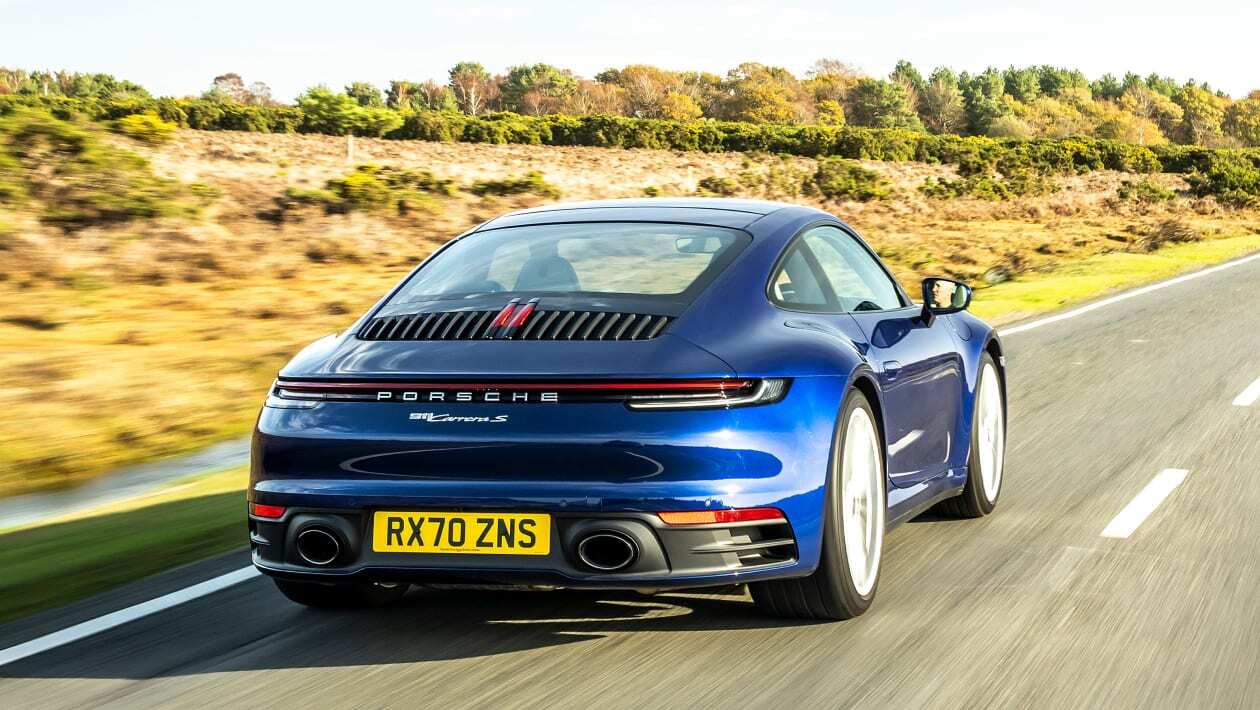
As the range-topping model, the Turbo S is the most powerful 911. It has a twin-turbocharged 3.8-litre petrol engine producing 641bhp. This means it can sprint from 0-62mph in 2.7 seconds, with a top speed of 205mph putting it on a level billing with supercars like the McLaren 720S and Ford GT coupe. The Sport Classic uses a detuned version of this engine, with 542bhp and rear-wheel-drive. While it's not as quick, it's aimed at Porsche owners who appreciate the thrill of getting all its power to the tarmac with a manual gearbox, and it's available in strictly limited numbers.
While every 911 is aimed at driving enthusiasts, the GT3 and GT3 RS are in a league of their own. The standard GT3 is available with a Clubsport pack that adds a roll cage where the back seats are normally found. Heavily adapted to perform flawlessly on track, our only criticism is that it feels very firm on British roads, even if this is a compromise virtually all potential buyers will be happy to make. Power is delivered by a 4.0-litre normally aspirated engine that makes 503bhp and - most importantly - can rev to 9,000rpm. The GT3 RS is even more extreme with 518bhp plus a giant rear wing and is really only suited to track use, or perhaps the occasional weekend blast if you don’t mind the road noise and firm suspension.
Porsche also offers a soft-top 911 Cabriolet and a 911 Targa model; we've reviewed both separately.
As should be expected, even the entry-level Porsche 911 is fantastic to drive. The engine has plenty of power at low revs, while the excellent new eight-speed PDK dual-clutch gearbox offers near-instantaneous gearchanges via the steering wheel-mounted paddles. After Porsche originally said the 992 would be auto-only, the brand has relented to vocal fans and a seven-speed manual gearbox is now a no-cost option. It can only be specced on Carrera S, 4S and GT3 versions, and comes with the Sport Chrono Package as standard.
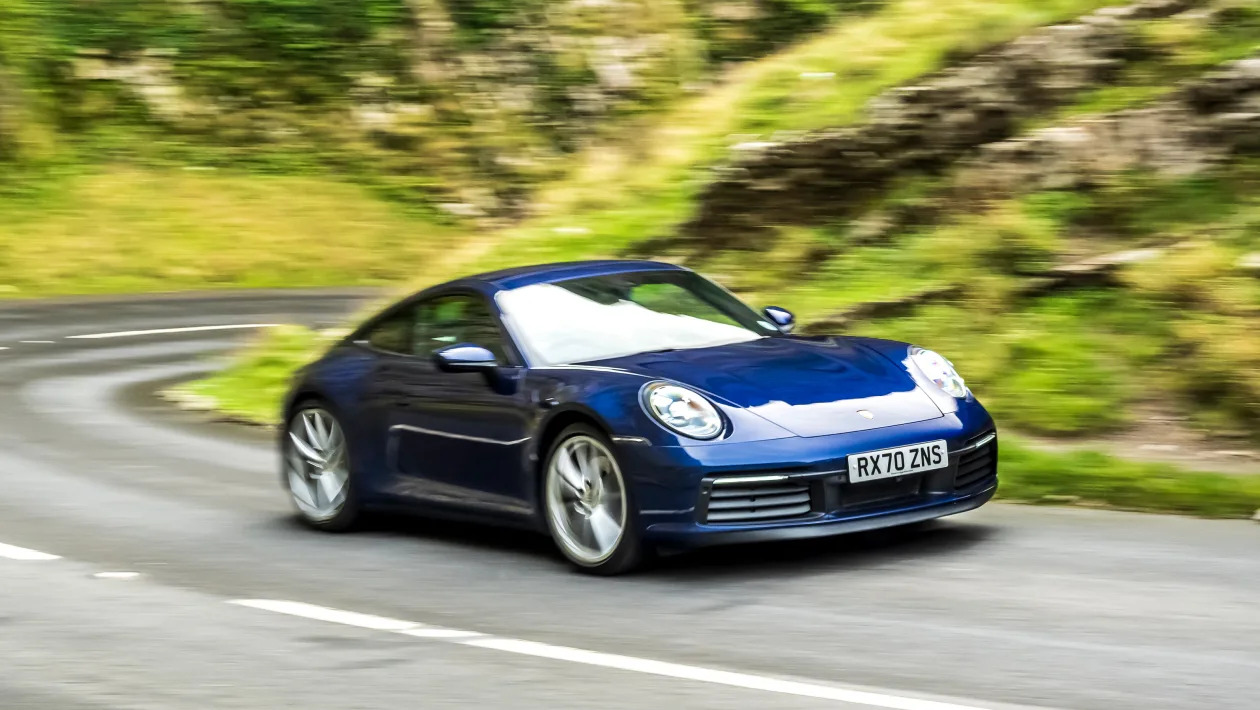
In corners, the 911’s quick, responsive and communicative steering inspires confidence, as does its excellent chassis, especially when fitted with optional Porsche Dynamic Chassis Control (PDCC) and Porsche Active Suspension Management (PASM). Testing the car on track, we found that the 911 felt genuinely and effortlessly fast – impressive given that even high-performance road cars can so often feel slow in such a setting.
On British roads, the 911 feels amazingly composed, even when faced with awkward cambers, deep ridges and potholes, which it shrugs off with ease. Its 'Wet' driving mode will also be useful on soaked roads, giving the rear-wheel-drive Carrera S almost as much traction as the four-wheel-drive 4S.
The Porsche 911’s interior is fitting of a car with a starting price of around £90k. There’s huge scope for personalisation, with a number of leather and trim colour options, while build and material quality are excellent. Porsche’s latest infotainment system dominates the otherwise minimalist dashboard and is easy to use, boasting Apple CarPlay, DAB radio, sat nav and Porsche Connect Plus app support as standard. A 132-litre luggage area is located under the bonnet and there’s space behind the front seats if the rears aren’t occupied – the 911 isn’t the last word in practicality, but it’s still usable every day.
The Porsche 911 has a history of sitting at the very top of its class and the newest model is no exception. Rivals like the Audi R8 and Jaguar F-Type may be more exciting to look at or cheaper to buy respectively, but the 911 is a highly evolved, high-quality product that thrills its driver like no other, all while offering space for two and their luggage.
For a more detailed look at the Porsche 911, read on for the rest of our in-depth review.
Porsche 911 coupe - MPG, running costs & CO2
The new Porsche 911 isn’t cheap to run, but it compares favorably with its closest rivals
The Porsche 911 is the traditional benchmark for usability in the luxury sports car market and the latest iteration lives up to its reputation. Its claimed economy and emissions figures are better than some lesser performance cars, and while servicing and consumables may be expensive, this is par for the course in the class.
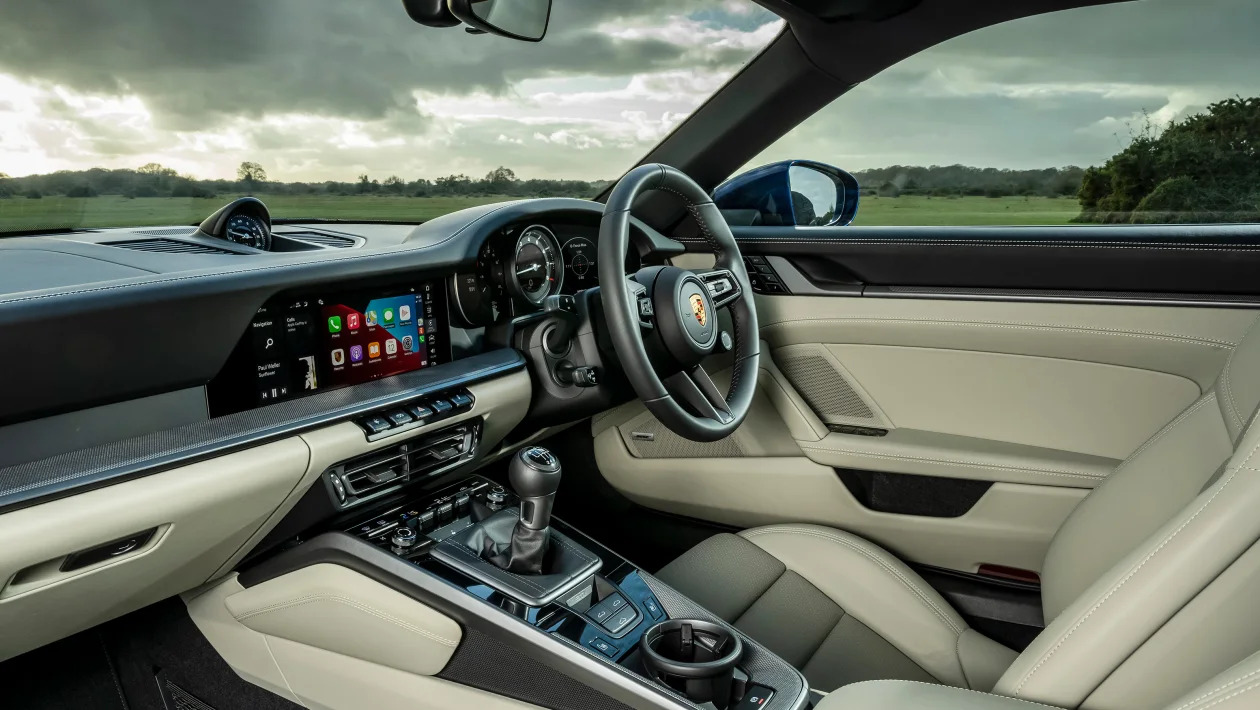
The 911 is more efficient than the Audi R8, with its 5.2-litre V10 petrol engine and economy of 25mpg. The 3.5-litre V6 hybrid version of the Lexus LC coupe (boasting claimed figures of 44mpg and 149g/km of CO2) beats the 911 on this front but the V8 version is more of a match for the 911 in performance terms but can only manage around 25mpg.
Porsche 911 MPG & CO2
Across the 911 line-up, the model designations are separated by ever higher power outputs, with the option of four-wheel drive for the Carrera and Carrera S models – the Carrera T is rear-wheel-drive only. The Turbo S is the fastest and most powerful 911 you can buy while the latest generation of ‘GT’ monikered cars are the most hardcore. Unlike the 911s of old, turbocharging has now been adopted across every model in the line-up, making them more efficient than their predecessors.
The entry-level 911 Carrera coupe and lightweight Carrera T are both capable of up to 27.4mpg depending on specification, the same figures as the four-wheel drive Carrera 4. Emissions range from 233g/km to 247g/km for the Carrera line-up.
The Carrera S returns a claimed 25.4-28mpg on average, making it very slightly more economical than the standard Carrera, while the Carrera 4S returns 25.4-27.7mpg. Both versions emit around 250g/km of CO2; figures that put the 911 into the highest possible Benefit-in-Kind (BiK) bracket for company-car tax. The seven-speed manual Carrera S can manage a more respectable 28.2mpg.
The more powerful 911 GTS manages up to 27.2mpg and emits 244g/km of CO2. The figures are pretty competitive when compared to the rest of the lineup.
Stepping up to the flagship Turbo S, which is both the most powerful and thirstiest version of the 911, you can expect a fuel economy of up to 23.5mpg. Unsurprisingly, it also has the highest emissions of the standard range, emitting more than 270g/km of CO2. With its manual gearbox, the Sport Classic is even worse, managing 22.4mpg and 285g/km.
It may not have the most outright power but large wings and semi-slick tyres make the 911 GT3 thirsty, with official figures of up to 21.9mpg and CO2 emissions of just over 290g/km.
VED (tax) for all models is charged at the standard rate, plus a surcharge for years two to six of ownership owing to the 911’s high list price. First-year road tax is rolled into the on-the-road price.
No Porsche 911 is exempt from the London Congestion Charge, though plug-in hybrid and all-electric versions are tipped to arrive in a few years’ time. The Porsche Taycan avoids this as it's fully electric.
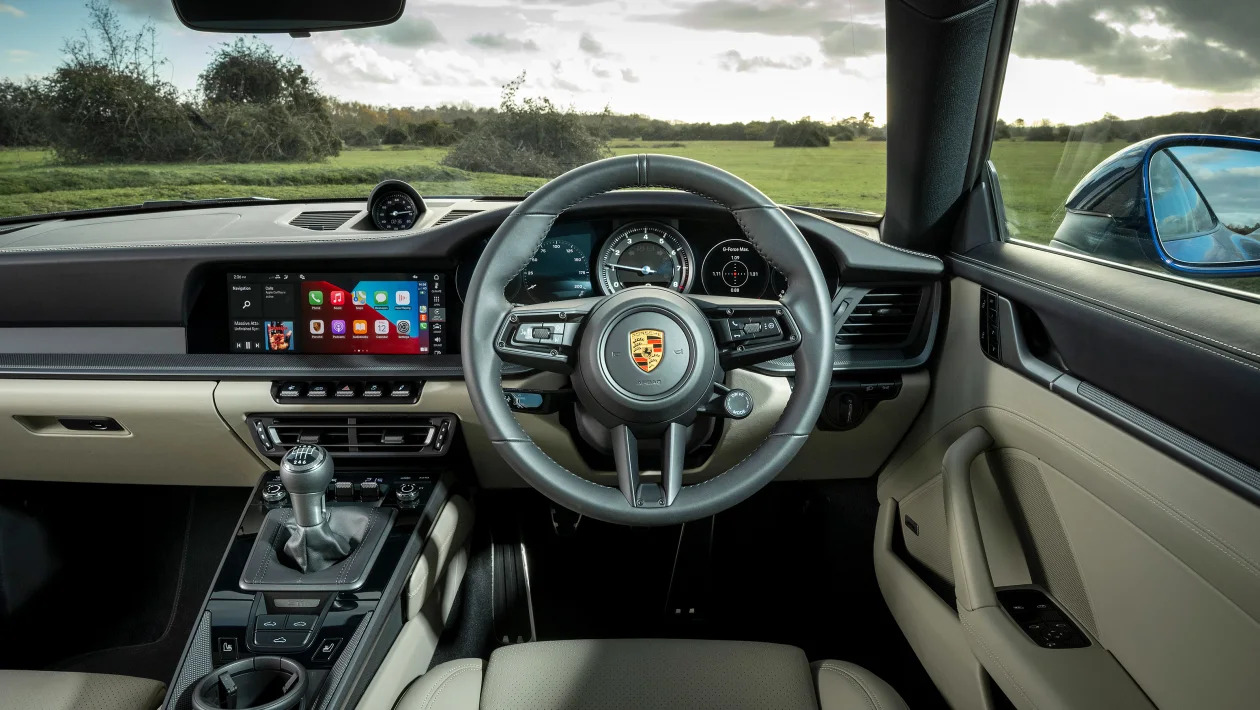
Insurance group
The Porsche 911 Carrera S slots into group 50 – the highest insurance group possible. Most of the 911’s major rivals are also in this group.
Warranty
The Porsche 911 comes with a three-year unlimited-mileage warranty, a 12-year corrosion warranty and three-year paint warranty. The warranty can be extended if you’re willing to pay for it. The 911’s unlimited-mileage warranty is far better than the three-year, 60,000-mile offering that’s standard on the Audi R8.
Servicing
The Porsche 911 requires a service every 20,000 miles. Prices for servicing for the 992-generation car are yet to be released at the time of writing, but those for the previous model were £675 for a 20,000-mile service and £120 for a brake fluid change. A 111-point check (at just over £200) is required if you want to take out a Porsche Approved Warranty.
Porsche 911 coupe - Engines, drive & performance
The Porsche 911 is still one of the very best sports cars on sale, regardless of which model you choose
Reliability & safety
The Porsche 911 has a long history of being rewarding, engaging and great fun to drive, with more modern iterations refining this experience to suit drivers of all abilities. The fundamental design of the 911 is idiosyncratic: it has a flat-six petrol engine mounted in the back of the car, rather than in the front or the middle, as per most conventional sports cars. Though this layout sounds counter-intuitive, Porsche has refined the recipe to provide great traction in all conditions, light, communicative steering, and huge reserves of grip – especially in four-wheel drive Carrera 4S form.
The latest 911 is the best it’s ever been from behind the wheel. It’s still the benchmark in its class for enthusiastic drivers, with supercar-rivalling performance, reassuringly predictable handling and remarkable on-track ability. Rivals like the Audi R8 and Aston Martin Vantage may go about their business with more drama, but the 911 remains top of the class as an all-rounder. The GTS offers a more focused driving experience than the entry-level Carrera models, while the Turbo versions are hugely capable supercars with enough comfort for cross-country road trips. The pinnacle of the range is the GT3 version, which will dismantle almost any other rival around a challenging race track, but this does give it a hard-edged feel on the road.
Porsche 911 petrol engine
Launched slightly after the more potent 'S' versions, the standard Carrera still produces an impressive 380bhp from its turbocharged 3.0-litre flat-six petrol engine. Coupled with the 911's famous traction - thanks to the rear-mounted engine pushing the tyres into the tarmac - it can sprint from 0-62mph in just 4.2 seconds, with the four-wheel drive Carrera 4 taking 4.4 seconds.
The Carrera T made its debut in 2022 as a more driver-focused variant of the standard Carrera. Only available with the seven-speed manual gearbox, the T (short for Touring) gets several tweaks such as a limited-slip differential, a sports exhaust and adaptive suspension which has been lowered by 10mm. All of this, alongside weight reduction from removing the rear seats and sound-deadening, means it will be a favourite amongst enthusiasts wanting a more involving drive, without the high price of the GTS and GT3 models.
It does a great job of proving power isn’t everything when it comes to driver enjoyment in a 911. The Carrera T’s chassis improvements shine through, and despite its extra focus, it doesn’t feel too unruly instead flowing with a challenging road. Its honed feel gives you even more confidence, allowing you to use all the power on offer.
Both the Porsche 911 Carrera S and Carrera 4S use the same 444bhp twin-turbocharged flat-six petrol engine. It propels the rear-wheel drive Carrera S from 0-62mph in 3.7 seconds, while the Carrera 4S takes just one-tenth less at 3.6 seconds. Top speed is 190mph for the 4S, or 191mph for the S, and careful tuning means it sounds more exciting than before.
When fitted with the optional Sports Chrono Package, 0-62mph times for the Carrera models drop by two-tenths of a second across the board, thanks to a launch control system and faster gearshifts for the eight-speed PDK dual-clutch gearbox. The S and 4S are now available with a seven-speed manual gearbox. In one way this doesn't make much sense - it's 0.7 seconds slower from 0-62mph - but there's an undeniable boost to the interaction between the car and driver.
Improvements to the manual gearbox mean it has a crisper feel than before, and as in the Porsche 718 Cayman and Boxster, software perfectly blips the throttle when you downshift in the Sport or Sport Plus drive modes. Yet it's not these objective improvements that matter most but the subjective change in feel the manual gives the 992. From behind the wheel it feels like a more traditional 911, and to our ears it even sounds better and more satisfying as you accelerate through the gears.
The performance on tap from the 3.0-litre flat-six is fantastic, regardless of which of the car’s eight gears is in use. There’s plenty of low-down and mid-range punch, while revving the engine out results in truly rapid progress and a fantastic exhaust note. In fact, the performance on show is akin to that found in the previous-generation 911 GTS.
Unless you regularly tackle snowy alpine roads, the two-wheel drive Carrera S has more than enough grip and traction on offer in all conditions. Less weight and a lower asking price mean choosing this 911 is easy. It also has a clever 'Wet' driving mode, that makes the two-wheel drive S feel almost as capable as the four-wheel drive 4S when squeezing the throttle out of sodden corners.
The GTS is a compromise between the Carrera and Turbo models. It’s powered by the same 3.0-litre six-cylinder engine as the lesser models but has an increased power output of 473bhp. 0-62mph takes just 3.3 seconds in the GTS when equipped with four-wheel drive; the rear-wheel-drive model is just one tenth of a second slower.
Porsche has sharpened the suspension of the GTS, too, giving the ride a slightly firmer feel than the Carrera S. While it’s not uncomfortable, it can feel slightly unsettled on rough road surfaces. However, it's a small sacrifice given the GTS feels noticeably sharper to drive than a regular model, with astonishing levels of grip in corners and secure body control. It’s unfazed by rapid changes of direction on the road, with communicative steering that makes it a very engaging car to drive.
As the current halo model of the 911 range, the Turbo S betters the performance figures of the Carrera models by a considerable margin. It features a larger engine, at 3.8 litres, that produces 641bhp and is capable of getting the car from 0-62mph in just 2.7 seconds.
The special edition Sport Classic comes with a slightly detuned version of the Turbo S engine, putting out 543bhp to the rear wheels. It’ll accelerate from 0-62mph in 5.1 seconds. While on the surface it can feel like a faster GTS, more time behind the wheel reveals a more natural steering feel and an incredibly wide performance band.
The current 911 range uses electric power-steering that offers best-in-class communication, consistency and accuracy; placing the car exactly where you want is easy and the driver is never left wondering how much grip is available. The steering is also quicker than before, meaning the car feels a bit more lively than the outgoing model.
Fitted with optional PASM adaptive dampers, the 911 deals admirably with flowing, bumpy roads like those found in the UK, seemingly ignoring rough road surfaces. This system can be softened for comfy motorway cruising or tightened for harder cornering, but we are fond of the default setting which strikes a happy balance.
As is tradition, the 911 GT3 goes without a turbocharger in favour of a naturally aspirated 4.0-litre six-cylinder petrol engine that revs to a scintillating 9,000rpm. It officially gets from 0-62mph in 3.4 seconds with a PDK gearbox but a manual is also available. It has a 198mph top speed.
Power is only up by 10bhp over the previous GT3 but it wasn’t the priority in the development of the latest version. Instead, Porsche has made radical changes to the chassis and aerodynamics, and the result is a staggering 17-second improvement on its time around the famous Nurburgring Nordschleife circuit. A huge rear wing with 'swan neck' style struts helps the GT3 gain 50 to 150% more downforce, depending how it's adjusted by the owner.
The most notable single change is a double-wishbone front suspension setup, for the first time in a 911. This elevates front grip to a new level and has allowed Porsche to make the suspension much stiffer, without ruining ride comfort. It exudes stability and confidence on track, with gear changes that are so fast and smooth, they allow the driver to shift in a corner without upsetting the car's balance. Optional carbon-ceramic brakes provide incredible stopping power with feel. Everything comes together to make the GT3 the closest thing to a racecar without actually buying one.
Porsche 911 coupe - Interior & comfort
The Porsche 911’s interior is a great place to spend time; overall quality and slick infotainment are particular highlights
A welcome evolution of the outgoing 991-generation 911’s already impressive interior, the 992’s is more refined in its design and boasts a great set of technological improvements. All of the materials used are high-quality and everything is solidly put together.
Porsche’s reputation for great seats is maintained, with a great driving position and optimal comfort; optional sports seats offer extra support during enthusiastic driving.
The 911’s suspension is well set-up to offer a great balance between poise and comfort – especially when Porsche’s PASM adaptive dampers are chosen from the options list. The depth of the Porsche’s options list means that buyers can build their 911 Carrera S or 4S to suit everything from everyday motorway use to weekend track-day action – or a balance between the two.
The Porsche 911’s interior is more than fitting for its hefty price tag – you won’t feel short-changed, especially once it’s crafted to your exact specifications.
The 911’s dashboard is simple in its design but offers great access to Porsche’s latest infotainment system, which displays information via two seven-inch screens behind the steering wheel (either side of an analogue rev-counter) and a centrally mounted 10.9-inch touchscreen.
The system controls just about every aspect of the car, though physical climate control switches are located just ahead of the gear selector. Physical shortcut toggles under the central screen help locate important functions easier on the move. A multifunction steering wheel is standard, with buttons for controlling the sound system, Bluetooth and other infotainment functions.
There are several different leather colours to choose from, available in a dizzying array of combinations. These are complemented by a choice of brushed metal, wood and carbon fibre finishes; whatever the customer’s taste, the end result is guaranteed to be of high quality.
Equipment
The Porsche 911 range is broad but relatively simple: the Carrera, Carrera 4, Carrera T, Carrera S, Carrera 4S, GTS, Turbo and Turbo S are available in coupe or Cabriolet convertible bodystyles, with the flagship GT3 only available in coupe form.
The 911 Carrera, Carrera 4, Carrera T, Carrera S, 4S, GTS, Turbo and GT3 models come as standard with 20/21-inch alloy wheels (the rear wheels are bigger), a tyre pressure monitoring system, start-stop, two small rear seats and Porsche Communication Management (PCM), which brings phone connectivity, a voice control system and an Internet-connected sat nav system. The aforementioned infotainment screens are standard, as is DAB radio and an eight-speaker, 150-watt sound system.
LED headlights and tail-lights are standard, with automatic activation and welcome-home lighting. The door mirrors are heated and electrically adjustable. Keyless-go, parking sensors front and rear, cruise control with a speed limiter, and two-zone climate control are all standard-fit too.
Black leather upholstery is standard, as are heated front sports seats and a multi-function steering wheel, while the T and GTS models have leather seats featuring Sport-Tex suede inserts.
Options
The options list for the Porsche 911 is long, varied and expensive but few other production sports cars offer as much scope for personalisation.
Aside from the standard alloy wheels, there are additional designs to choose from, several different interior leather combinations ( and a range of extra touches available, including the leather interior package and Paldao wood trim. The standard stereo can be replaced with either a 570-watt, 12-speaker Bose system or an 855-watt, 13-speaker Burmester system. All of these options can range from just a few hundred pounds into the thousands, all depending on how bespoke you want your car to be. Speaking of bespoke, a custom-fitted leather luggage set is also available, costing over £5,000.
The 911’s headlights can be upgraded to adaptive LED matrix versions as part of the Porsche Dynamic Light System Plus (PDLS Plus). Auto-dimming interior and exterior mirrors as well as a rear wiper are also offered.
There are some performance-focused option packages that are worth choosing. The sports exhaust system imbues the 911 with a throatier engine note at the push of an interior button, replacing its standard quad-tips with two oval-shaped items.
The Sport Chrono Package is a long-standing feature on a 911 options list, combining dynamic engine mounts, the addition of ‘Sport Plus’ and ‘Individual’ modes to the driving mode selection (selectable via a new button on the steering wheel), plus throttle-blip downshifts in sportier modes and a launch control setting. The Sport Chrono pack also adds a stopwatch to the top of the dash and the Porsche Track Precision app to the car’s infotainment system. While available as an option on automatic models, the Sports Chrono pack comes as standard on manual cars.
Porsche 911 coupe - Practicality & boot space
The Porsche 911 is a great everyday sports car, with generous space for passengers and luggage
While a Porsche 911 is not the last word in practicality in outright terms, it offers a level of genuine usability that’s unrivalled in its class. The 132-litre front boot is a good size and there are two small rear seats that can be used to carry children or extra luggage.
The 911 is bigger than before but retains an excellent driving position and clear visibility, both of which are sure to be appreciated if you spend lots of time driving in town or squeezing into multi-storey car parks. Optional rear-wheel steering is available; this offers sharper handling but also an improved turning circle in tight spots.
On narrow roads, the new 911 feels far easier to manage than the broad-shouldered Audi R8 and long-bonneted Mercedes-AMG GT or Jaguar F-Type. Each of those rivals is more cramped inside, too.
Porsche 911 interior space and storage
The Porsche 911 is a comfortable car in which to spend time; its seats and driving position are good and there’s plenty of head, leg and elbow room. Unlike rivals like the Audi R8, the 911 is a genuinely refined and comfortable place to spend a longer journey. As before, the rear seats are only suitable for children over any larger distance. It's a different story for the Carrera T and GT3 models, however, as both sacrifice their rear seats - and a good deal of refinement - in favour of saving weight and outright performance.
In the rest of the range, there are new larger door bins, a good-sized glovebox and a central storage compartment in which to store smaller everyday items, but a small point of note are the 992’s new cup-holders, which aren’t as clever in their design as the outgoing versions.
Boot space
There’s 132 litres of storage space located under the Porsche 911’s bonnet – usefully larger than the Audi R8’s 112-litre ‘frunk’. Seasoned 911 owners know just how useful the 2+2 rear bench can be for storage too; rucksacks and other items of luggage can be stored there when there are no rear-seat passengers.
Towing
There’s not a quoted towing weight (or indeed an option for a towbar) but the Porsche 911 can be fitted with roof rails and a roof box. The car’s overall maximum payload is 470kg.
Porsche 911 coupe - Reliability & safety
The Porsche 911 is yet to be officially crash tested, while reliability is still unproven
While the Porsche 911 itself didn’t make it into our 2022 Driver Power survey, the brand did finish top of our brand survey, with owners telling us they like their cars’ infotainment systems, interior quality and versatility. Owners were also very satisfied with the design and the way the cars drive. Porsche came top for reliability, too, even though a relatively high 29.6% of owners reported a fault in the first year of ownership.
Build-quality is a Porsche cornerstone and the latest 911 certainly feels as though it lives up to the brand’s reputation in this department. We’ll have to wait and see how its reliability pans out
Safety
While there’s no official Euro NCAP rating for the Porsche 911, its safety credentials are impressive. There are more safety and driver assistance systems available than before, including automatic emergency braking (AEB) with pedestrian detection, lane-keep assist, front and rear park assist with optional 360-degree camera views, blind spot monitoring, night vision assist, lane-change assist and adaptive cruise control with stop/go functionality.
A new standard Wet setting is a clever addition to the driving mode line-up, using microphones in the wheel arches to tell when the road is wet; various car settings like traction control and electronic stability programme can then be adjusted to suit with the push of one button. The system works well in practice and is an extra step towards on-road safety that the 911’s rivals can’t quite match.
LED headlights come as standard to offer a great view of the road ahead in the dark or inclement weather, while optional LED Matrix versions further enhance forward visibility by dimming for oncoming traffic or the car in front, but lighting up everything else. The 911’s new signature rear LED light bar also increases visibility to other road users – as well as looking great.
There are two full-size front airbags, plus Porsche Side Impact Protection (POSIP) which adds side-impact protection elements in the doors, thorax airbags in the seat bolsters, plus head airbags in each door panel. The front passenger seat has ISOFIX points for a child seat and the airbags can be disabled for this purpose.
Source:
Porsche 911 coupe review
"The latest 992-generation Porsche 911 is the best yet; fast, fun and hugely capable"
The Porsche 911 is the flagship model in the German manufacturer’s range and is perhaps the most well-known sports car on sale today. The current model, referred to by enthusiasts as the ‘992’, is the latest evolution of a car whose recipe has remained largely unchanged for over 50 years – its rear-mounted six-cylinder engine, great performance and genuine everyday usability are as important now as they were in the 1960s.
Today’s model represents a meaningful step forward from the 991-generation, which was first introduced in 2011. Based on new modular underpinnings that will allow for electrification, the latest car also gets a refreshed engine, a new interior packed with technology and styling that’s modern yet still faithful to the model’s impressive heritage.
The Porsche 911 coupe is available in eight main trim levels; Carrera, Carrera 4, Carrera T, Carrera S, Carrera 4S, GTS and flagship Turbo and Turbo S. There's also the GT3 and the GT3 RS, which are hardcore versions designed for weekend and track-use, as well as the Porsche Exclusive Manufaktur special-edition models. These include the limited Sport Classic, which borrows many bits from the Turbo but comes with a seven-speed manual gearbox and rear-wheel-drive setup, along with a unique, retro-inspired design.
The 911 Carrera coupe is the starting point of the range, using a 380bhp 3.0-litre flat-six petrol engine with rear-wheel drive. The Carrera 4 has the same power output but four-wheel drive. Even with its entry-level billing, the 911 Carrera can sprint from 0-62mph in 4.2 seconds, with the Carrera 4 taking 4.4 seconds. There’s also the Carrera T which uses the same setup as the base Carrera with a mandatory manual gearbox, lightweight components, lowered suspension, a sports exhaust and no back seats – 0-62mph takes 4.5 seconds. It’s aimed at enthusiasts who don’t want, don’t have the budget for or can’t get hold of a more racy version like the GT3. It might not be as powerful as top versions, but it just goes to show how important the chassis is for the driving experience.
The Carrera S and four-wheel drive Carrera 4S are both powered by a 444bhp version of the same twin-turbo flat-six petrol engine; the Carrera S manages 0-62mph in 3.7 seconds, while the Carrera 4S is a tenth faster at 3.6 seconds. Economy is quoted at up to 28mpg for the Carrera S and 27.7mpg for the Carrera 4S, with CO2 emissions ranging from 229g/km to 253g/km for both cars. The Carrera S is also available with a seven-speed manual gearbox, which is slightly slower than the PDK automatic but adds to the sense of driving involvement.
Sitting beneath the Turbo models, the GTS features tweaks to improve the handling of the car plus a more powerful version of the 3.0-litre engine used in the Carrera, as well as darkened trim pieces and black alloy wheels. Power is up to 473bhp, meaning the 0-62mph time falls to just 3.3 seconds with the eight-speed PDK automatic gearbox and four-wheel drive. For drivers who really want to feel involved, a seven-speed manual is available as a no-cost option. The GTS returns around 27mpg and emissions from around 240g/km upwards.
As the range-topping model, the Turbo S is the most powerful 911. It has a twin-turbocharged 3.8-litre petrol engine producing 641bhp. This means it can sprint from 0-62mph in 2.7 seconds, with a top speed of 205mph putting it on a level billing with supercars like the McLaren 720S and Ford GT coupe. The Sport Classic uses a detuned version of this engine, with 542bhp and rear-wheel-drive. While it's not as quick, it's aimed at Porsche owners who appreciate the thrill of getting all its power to the tarmac with a manual gearbox, and it's available in strictly limited numbers.
While every 911 is aimed at driving enthusiasts, the GT3 and GT3 RS are in a league of their own. The standard GT3 is available with a Clubsport pack that adds a roll cage where the back seats are normally found. Heavily adapted to perform flawlessly on track, our only criticism is that it feels very firm on British roads, even if this is a compromise virtually all potential buyers will be happy to make. Power is delivered by a 4.0-litre normally aspirated engine that makes 503bhp and - most importantly - can rev to 9,000rpm. The GT3 RS is even more extreme with 518bhp plus a giant rear wing and is really only suited to track use, or perhaps the occasional weekend blast if you don’t mind the road noise and firm suspension.
Porsche also offers a soft-top 911 Cabriolet and a 911 Targa model; we've reviewed both separately.
As should be expected, even the entry-level Porsche 911 is fantastic to drive. The engine has plenty of power at low revs, while the excellent new eight-speed PDK dual-clutch gearbox offers near-instantaneous gearchanges via the steering wheel-mounted paddles. After Porsche originally said the 992 would be auto-only, the brand has relented to vocal fans and a seven-speed manual gearbox is now a no-cost option. It can only be specced on Carrera S, 4S and GT3 versions, and comes with the Sport Chrono Package as standard.
In corners, the 911’s quick, responsive and communicative steering inspires confidence, as does its excellent chassis, especially when fitted with optional Porsche Dynamic Chassis Control (PDCC) and Porsche Active Suspension Management (PASM). Testing the car on track, we found that the 911 felt genuinely and effortlessly fast – impressive given that even high-performance road cars can so often feel slow in such a setting.
On British roads, the 911 feels amazingly composed, even when faced with awkward cambers, deep ridges and potholes, which it shrugs off with ease. Its 'Wet' driving mode will also be useful on soaked roads, giving the rear-wheel-drive Carrera S almost as much traction as the four-wheel-drive 4S.
The Porsche 911’s interior is fitting of a car with a starting price of around £90k. There’s huge scope for personalisation, with a number of leather and trim colour options, while build and material quality are excellent. Porsche’s latest infotainment system dominates the otherwise minimalist dashboard and is easy to use, boasting Apple CarPlay, DAB radio, sat nav and Porsche Connect Plus app support as standard. A 132-litre luggage area is located under the bonnet and there’s space behind the front seats if the rears aren’t occupied – the 911 isn’t the last word in practicality, but it’s still usable every day.
The Porsche 911 has a history of sitting at the very top of its class and the newest model is no exception. Rivals like the Audi R8 and Jaguar F-Type may be more exciting to look at or cheaper to buy respectively, but the 911 is a highly evolved, high-quality product that thrills its driver like no other, all while offering space for two and their luggage.
For a more detailed look at the Porsche 911, read on for the rest of our in-depth review.
Porsche 911 coupe - MPG, running costs & CO2
The new Porsche 911 isn’t cheap to run, but it compares favorably with its closest rivals
The Porsche 911 is the traditional benchmark for usability in the luxury sports car market and the latest iteration lives up to its reputation. Its claimed economy and emissions figures are better than some lesser performance cars, and while servicing and consumables may be expensive, this is par for the course in the class.
The 911 is more efficient than the Audi R8, with its 5.2-litre V10 petrol engine and economy of 25mpg. The 3.5-litre V6 hybrid version of the Lexus LC coupe (boasting claimed figures of 44mpg and 149g/km of CO2) beats the 911 on this front but the V8 version is more of a match for the 911 in performance terms but can only manage around 25mpg.
Porsche 911 MPG & CO2
Across the 911 line-up, the model designations are separated by ever higher power outputs, with the option of four-wheel drive for the Carrera and Carrera S models – the Carrera T is rear-wheel-drive only. The Turbo S is the fastest and most powerful 911 you can buy while the latest generation of ‘GT’ monikered cars are the most hardcore. Unlike the 911s of old, turbocharging has now been adopted across every model in the line-up, making them more efficient than their predecessors.
The entry-level 911 Carrera coupe and lightweight Carrera T are both capable of up to 27.4mpg depending on specification, the same figures as the four-wheel drive Carrera 4. Emissions range from 233g/km to 247g/km for the Carrera line-up.
The Carrera S returns a claimed 25.4-28mpg on average, making it very slightly more economical than the standard Carrera, while the Carrera 4S returns 25.4-27.7mpg. Both versions emit around 250g/km of CO2; figures that put the 911 into the highest possible Benefit-in-Kind (BiK) bracket for company-car tax. The seven-speed manual Carrera S can manage a more respectable 28.2mpg.
The more powerful 911 GTS manages up to 27.2mpg and emits 244g/km of CO2. The figures are pretty competitive when compared to the rest of the lineup.
Stepping up to the flagship Turbo S, which is both the most powerful and thirstiest version of the 911, you can expect a fuel economy of up to 23.5mpg. Unsurprisingly, it also has the highest emissions of the standard range, emitting more than 270g/km of CO2. With its manual gearbox, the Sport Classic is even worse, managing 22.4mpg and 285g/km.
It may not have the most outright power but large wings and semi-slick tyres make the 911 GT3 thirsty, with official figures of up to 21.9mpg and CO2 emissions of just over 290g/km.
VED (tax) for all models is charged at the standard rate, plus a surcharge for years two to six of ownership owing to the 911’s high list price. First-year road tax is rolled into the on-the-road price.
No Porsche 911 is exempt from the London Congestion Charge, though plug-in hybrid and all-electric versions are tipped to arrive in a few years’ time. The Porsche Taycan avoids this as it's fully electric.
Insurance group
The Porsche 911 Carrera S slots into group 50 – the highest insurance group possible. Most of the 911’s major rivals are also in this group.
Warranty
The Porsche 911 comes with a three-year unlimited-mileage warranty, a 12-year corrosion warranty and three-year paint warranty. The warranty can be extended if you’re willing to pay for it. The 911’s unlimited-mileage warranty is far better than the three-year, 60,000-mile offering that’s standard on the Audi R8.
Servicing
The Porsche 911 requires a service every 20,000 miles. Prices for servicing for the 992-generation car are yet to be released at the time of writing, but those for the previous model were £675 for a 20,000-mile service and £120 for a brake fluid change. A 111-point check (at just over £200) is required if you want to take out a Porsche Approved Warranty.
Porsche 911 coupe - Engines, drive & performance
The Porsche 911 is still one of the very best sports cars on sale, regardless of which model you choose
Reliability & safety
The Porsche 911 has a long history of being rewarding, engaging and great fun to drive, with more modern iterations refining this experience to suit drivers of all abilities. The fundamental design of the 911 is idiosyncratic: it has a flat-six petrol engine mounted in the back of the car, rather than in the front or the middle, as per most conventional sports cars. Though this layout sounds counter-intuitive, Porsche has refined the recipe to provide great traction in all conditions, light, communicative steering, and huge reserves of grip – especially in four-wheel drive Carrera 4S form.
The latest 911 is the best it’s ever been from behind the wheel. It’s still the benchmark in its class for enthusiastic drivers, with supercar-rivalling performance, reassuringly predictable handling and remarkable on-track ability. Rivals like the Audi R8 and Aston Martin Vantage may go about their business with more drama, but the 911 remains top of the class as an all-rounder. The GTS offers a more focused driving experience than the entry-level Carrera models, while the Turbo versions are hugely capable supercars with enough comfort for cross-country road trips. The pinnacle of the range is the GT3 version, which will dismantle almost any other rival around a challenging race track, but this does give it a hard-edged feel on the road.
Porsche 911 petrol engine
Launched slightly after the more potent 'S' versions, the standard Carrera still produces an impressive 380bhp from its turbocharged 3.0-litre flat-six petrol engine. Coupled with the 911's famous traction - thanks to the rear-mounted engine pushing the tyres into the tarmac - it can sprint from 0-62mph in just 4.2 seconds, with the four-wheel drive Carrera 4 taking 4.4 seconds.
The Carrera T made its debut in 2022 as a more driver-focused variant of the standard Carrera. Only available with the seven-speed manual gearbox, the T (short for Touring) gets several tweaks such as a limited-slip differential, a sports exhaust and adaptive suspension which has been lowered by 10mm. All of this, alongside weight reduction from removing the rear seats and sound-deadening, means it will be a favourite amongst enthusiasts wanting a more involving drive, without the high price of the GTS and GT3 models.
It does a great job of proving power isn’t everything when it comes to driver enjoyment in a 911. The Carrera T’s chassis improvements shine through, and despite its extra focus, it doesn’t feel too unruly instead flowing with a challenging road. Its honed feel gives you even more confidence, allowing you to use all the power on offer.
Both the Porsche 911 Carrera S and Carrera 4S use the same 444bhp twin-turbocharged flat-six petrol engine. It propels the rear-wheel drive Carrera S from 0-62mph in 3.7 seconds, while the Carrera 4S takes just one-tenth less at 3.6 seconds. Top speed is 190mph for the 4S, or 191mph for the S, and careful tuning means it sounds more exciting than before.
When fitted with the optional Sports Chrono Package, 0-62mph times for the Carrera models drop by two-tenths of a second across the board, thanks to a launch control system and faster gearshifts for the eight-speed PDK dual-clutch gearbox. The S and 4S are now available with a seven-speed manual gearbox. In one way this doesn't make much sense - it's 0.7 seconds slower from 0-62mph - but there's an undeniable boost to the interaction between the car and driver.
Improvements to the manual gearbox mean it has a crisper feel than before, and as in the Porsche 718 Cayman and Boxster, software perfectly blips the throttle when you downshift in the Sport or Sport Plus drive modes. Yet it's not these objective improvements that matter most but the subjective change in feel the manual gives the 992. From behind the wheel it feels like a more traditional 911, and to our ears it even sounds better and more satisfying as you accelerate through the gears.
The performance on tap from the 3.0-litre flat-six is fantastic, regardless of which of the car’s eight gears is in use. There’s plenty of low-down and mid-range punch, while revving the engine out results in truly rapid progress and a fantastic exhaust note. In fact, the performance on show is akin to that found in the previous-generation 911 GTS.
Unless you regularly tackle snowy alpine roads, the two-wheel drive Carrera S has more than enough grip and traction on offer in all conditions. Less weight and a lower asking price mean choosing this 911 is easy. It also has a clever 'Wet' driving mode, that makes the two-wheel drive S feel almost as capable as the four-wheel drive 4S when squeezing the throttle out of sodden corners.
The GTS is a compromise between the Carrera and Turbo models. It’s powered by the same 3.0-litre six-cylinder engine as the lesser models but has an increased power output of 473bhp. 0-62mph takes just 3.3 seconds in the GTS when equipped with four-wheel drive; the rear-wheel-drive model is just one tenth of a second slower.
Porsche has sharpened the suspension of the GTS, too, giving the ride a slightly firmer feel than the Carrera S. While it’s not uncomfortable, it can feel slightly unsettled on rough road surfaces. However, it's a small sacrifice given the GTS feels noticeably sharper to drive than a regular model, with astonishing levels of grip in corners and secure body control. It’s unfazed by rapid changes of direction on the road, with communicative steering that makes it a very engaging car to drive.
As the current halo model of the 911 range, the Turbo S betters the performance figures of the Carrera models by a considerable margin. It features a larger engine, at 3.8 litres, that produces 641bhp and is capable of getting the car from 0-62mph in just 2.7 seconds.
The special edition Sport Classic comes with a slightly detuned version of the Turbo S engine, putting out 543bhp to the rear wheels. It’ll accelerate from 0-62mph in 5.1 seconds. While on the surface it can feel like a faster GTS, more time behind the wheel reveals a more natural steering feel and an incredibly wide performance band.
The current 911 range uses electric power-steering that offers best-in-class communication, consistency and accuracy; placing the car exactly where you want is easy and the driver is never left wondering how much grip is available. The steering is also quicker than before, meaning the car feels a bit more lively than the outgoing model.
Fitted with optional PASM adaptive dampers, the 911 deals admirably with flowing, bumpy roads like those found in the UK, seemingly ignoring rough road surfaces. This system can be softened for comfy motorway cruising or tightened for harder cornering, but we are fond of the default setting which strikes a happy balance.
As is tradition, the 911 GT3 goes without a turbocharger in favour of a naturally aspirated 4.0-litre six-cylinder petrol engine that revs to a scintillating 9,000rpm. It officially gets from 0-62mph in 3.4 seconds with a PDK gearbox but a manual is also available. It has a 198mph top speed.
Power is only up by 10bhp over the previous GT3 but it wasn’t the priority in the development of the latest version. Instead, Porsche has made radical changes to the chassis and aerodynamics, and the result is a staggering 17-second improvement on its time around the famous Nurburgring Nordschleife circuit. A huge rear wing with 'swan neck' style struts helps the GT3 gain 50 to 150% more downforce, depending how it's adjusted by the owner.
The most notable single change is a double-wishbone front suspension setup, for the first time in a 911. This elevates front grip to a new level and has allowed Porsche to make the suspension much stiffer, without ruining ride comfort. It exudes stability and confidence on track, with gear changes that are so fast and smooth, they allow the driver to shift in a corner without upsetting the car's balance. Optional carbon-ceramic brakes provide incredible stopping power with feel. Everything comes together to make the GT3 the closest thing to a racecar without actually buying one.
Porsche 911 coupe - Interior & comfort
The Porsche 911’s interior is a great place to spend time; overall quality and slick infotainment are particular highlights
A welcome evolution of the outgoing 991-generation 911’s already impressive interior, the 992’s is more refined in its design and boasts a great set of technological improvements. All of the materials used are high-quality and everything is solidly put together.
Porsche’s reputation for great seats is maintained, with a great driving position and optimal comfort; optional sports seats offer extra support during enthusiastic driving.
The 911’s suspension is well set-up to offer a great balance between poise and comfort – especially when Porsche’s PASM adaptive dampers are chosen from the options list. The depth of the Porsche’s options list means that buyers can build their 911 Carrera S or 4S to suit everything from everyday motorway use to weekend track-day action – or a balance between the two.
The Porsche 911’s interior is more than fitting for its hefty price tag – you won’t feel short-changed, especially once it’s crafted to your exact specifications.
The 911’s dashboard is simple in its design but offers great access to Porsche’s latest infotainment system, which displays information via two seven-inch screens behind the steering wheel (either side of an analogue rev-counter) and a centrally mounted 10.9-inch touchscreen.
The system controls just about every aspect of the car, though physical climate control switches are located just ahead of the gear selector. Physical shortcut toggles under the central screen help locate important functions easier on the move. A multifunction steering wheel is standard, with buttons for controlling the sound system, Bluetooth and other infotainment functions.
There are several different leather colours to choose from, available in a dizzying array of combinations. These are complemented by a choice of brushed metal, wood and carbon fibre finishes; whatever the customer’s taste, the end result is guaranteed to be of high quality.
Equipment
The Porsche 911 range is broad but relatively simple: the Carrera, Carrera 4, Carrera T, Carrera S, Carrera 4S, GTS, Turbo and Turbo S are available in coupe or Cabriolet convertible bodystyles, with the flagship GT3 only available in coupe form.
The 911 Carrera, Carrera 4, Carrera T, Carrera S, 4S, GTS, Turbo and GT3 models come as standard with 20/21-inch alloy wheels (the rear wheels are bigger), a tyre pressure monitoring system, start-stop, two small rear seats and Porsche Communication Management (PCM), which brings phone connectivity, a voice control system and an Internet-connected sat nav system. The aforementioned infotainment screens are standard, as is DAB radio and an eight-speaker, 150-watt sound system.
LED headlights and tail-lights are standard, with automatic activation and welcome-home lighting. The door mirrors are heated and electrically adjustable. Keyless-go, parking sensors front and rear, cruise control with a speed limiter, and two-zone climate control are all standard-fit too.
Black leather upholstery is standard, as are heated front sports seats and a multi-function steering wheel, while the T and GTS models have leather seats featuring Sport-Tex suede inserts.
Options
The options list for the Porsche 911 is long, varied and expensive but few other production sports cars offer as much scope for personalisation.
Aside from the standard alloy wheels, there are additional designs to choose from, several different interior leather combinations ( and a range of extra touches available, including the leather interior package and Paldao wood trim. The standard stereo can be replaced with either a 570-watt, 12-speaker Bose system or an 855-watt, 13-speaker Burmester system. All of these options can range from just a few hundred pounds into the thousands, all depending on how bespoke you want your car to be. Speaking of bespoke, a custom-fitted leather luggage set is also available, costing over £5,000.
The 911’s headlights can be upgraded to adaptive LED matrix versions as part of the Porsche Dynamic Light System Plus (PDLS Plus). Auto-dimming interior and exterior mirrors as well as a rear wiper are also offered.
There are some performance-focused option packages that are worth choosing. The sports exhaust system imbues the 911 with a throatier engine note at the push of an interior button, replacing its standard quad-tips with two oval-shaped items.
The Sport Chrono Package is a long-standing feature on a 911 options list, combining dynamic engine mounts, the addition of ‘Sport Plus’ and ‘Individual’ modes to the driving mode selection (selectable via a new button on the steering wheel), plus throttle-blip downshifts in sportier modes and a launch control setting. The Sport Chrono pack also adds a stopwatch to the top of the dash and the Porsche Track Precision app to the car’s infotainment system. While available as an option on automatic models, the Sports Chrono pack comes as standard on manual cars.
Porsche 911 coupe - Practicality & boot space
The Porsche 911 is a great everyday sports car, with generous space for passengers and luggage
While a Porsche 911 is not the last word in practicality in outright terms, it offers a level of genuine usability that’s unrivalled in its class. The 132-litre front boot is a good size and there are two small rear seats that can be used to carry children or extra luggage.
The 911 is bigger than before but retains an excellent driving position and clear visibility, both of which are sure to be appreciated if you spend lots of time driving in town or squeezing into multi-storey car parks. Optional rear-wheel steering is available; this offers sharper handling but also an improved turning circle in tight spots.
On narrow roads, the new 911 feels far easier to manage than the broad-shouldered Audi R8 and long-bonneted Mercedes-AMG GT or Jaguar F-Type. Each of those rivals is more cramped inside, too.
Porsche 911 interior space and storage
The Porsche 911 is a comfortable car in which to spend time; its seats and driving position are good and there’s plenty of head, leg and elbow room. Unlike rivals like the Audi R8, the 911 is a genuinely refined and comfortable place to spend a longer journey. As before, the rear seats are only suitable for children over any larger distance. It's a different story for the Carrera T and GT3 models, however, as both sacrifice their rear seats - and a good deal of refinement - in favour of saving weight and outright performance.
In the rest of the range, there are new larger door bins, a good-sized glovebox and a central storage compartment in which to store smaller everyday items, but a small point of note are the 992’s new cup-holders, which aren’t as clever in their design as the outgoing versions.
Boot space
There’s 132 litres of storage space located under the Porsche 911’s bonnet – usefully larger than the Audi R8’s 112-litre ‘frunk’. Seasoned 911 owners know just how useful the 2+2 rear bench can be for storage too; rucksacks and other items of luggage can be stored there when there are no rear-seat passengers.
Towing
There’s not a quoted towing weight (or indeed an option for a towbar) but the Porsche 911 can be fitted with roof rails and a roof box. The car’s overall maximum payload is 470kg.
Porsche 911 coupe - Reliability & safety
The Porsche 911 is yet to be officially crash tested, while reliability is still unproven
While the Porsche 911 itself didn’t make it into our 2022 Driver Power survey, the brand did finish top of our brand survey, with owners telling us they like their cars’ infotainment systems, interior quality and versatility. Owners were also very satisfied with the design and the way the cars drive. Porsche came top for reliability, too, even though a relatively high 29.6% of owners reported a fault in the first year of ownership.
Build-quality is a Porsche cornerstone and the latest 911 certainly feels as though it lives up to the brand’s reputation in this department. We’ll have to wait and see how its reliability pans out
Safety
While there’s no official Euro NCAP rating for the Porsche 911, its safety credentials are impressive. There are more safety and driver assistance systems available than before, including automatic emergency braking (AEB) with pedestrian detection, lane-keep assist, front and rear park assist with optional 360-degree camera views, blind spot monitoring, night vision assist, lane-change assist and adaptive cruise control with stop/go functionality.
A new standard Wet setting is a clever addition to the driving mode line-up, using microphones in the wheel arches to tell when the road is wet; various car settings like traction control and electronic stability programme can then be adjusted to suit with the push of one button. The system works well in practice and is an extra step towards on-road safety that the 911’s rivals can’t quite match.
LED headlights come as standard to offer a great view of the road ahead in the dark or inclement weather, while optional LED Matrix versions further enhance forward visibility by dimming for oncoming traffic or the car in front, but lighting up everything else. The 911’s new signature rear LED light bar also increases visibility to other road users – as well as looking great.
There are two full-size front airbags, plus Porsche Side Impact Protection (POSIP) which adds side-impact protection elements in the doors, thorax airbags in the seat bolsters, plus head airbags in each door panel. The front passenger seat has ISOFIX points for a child seat and the airbags can be disabled for this purpose.
Source: carbuyer.co.uk

